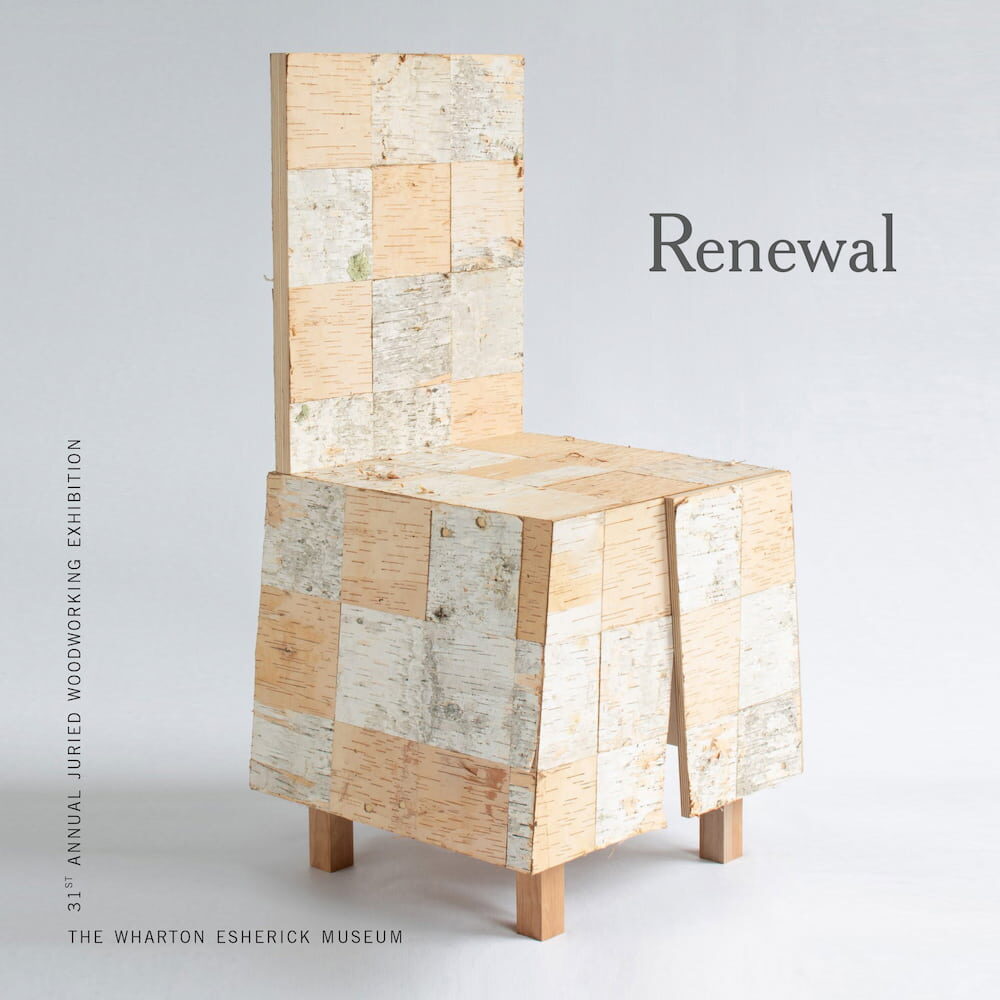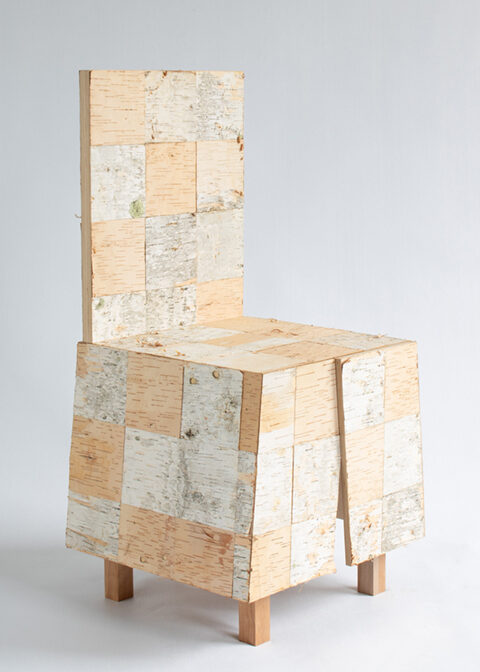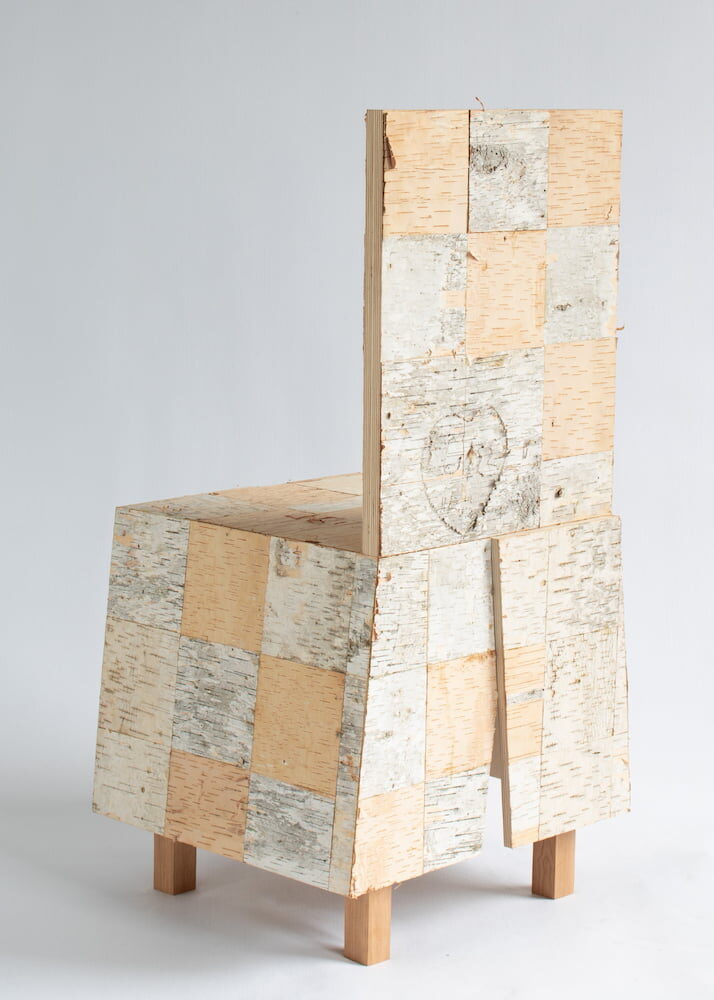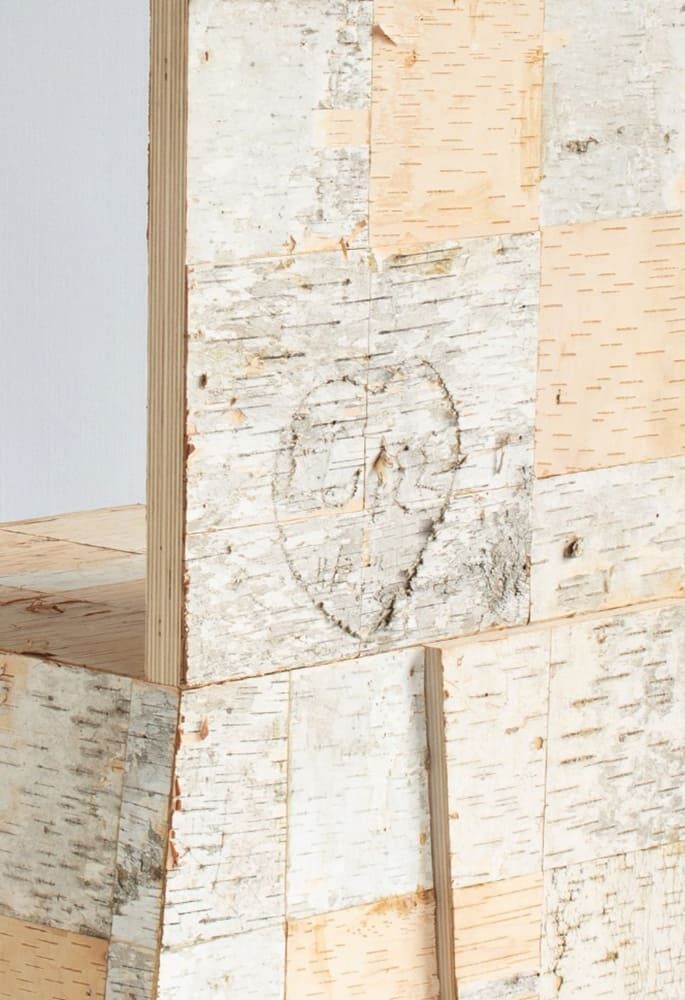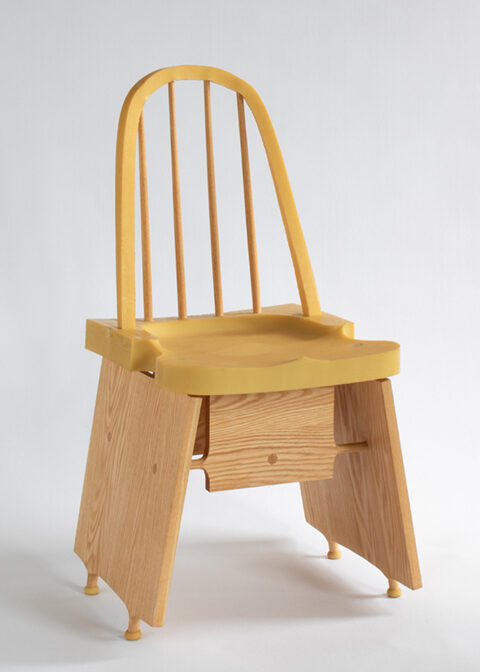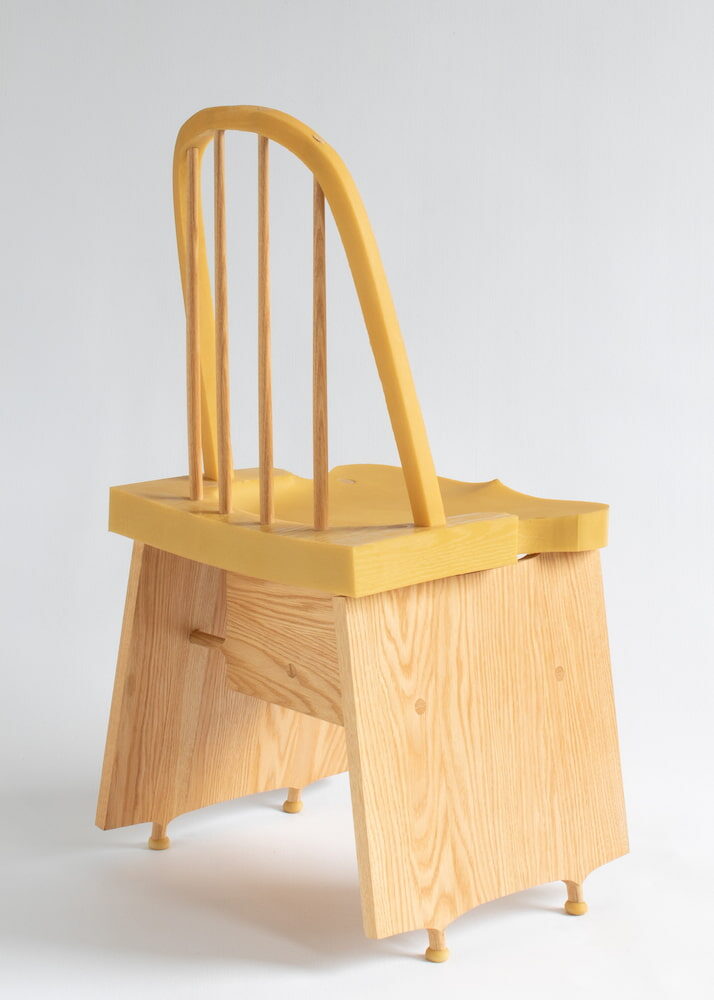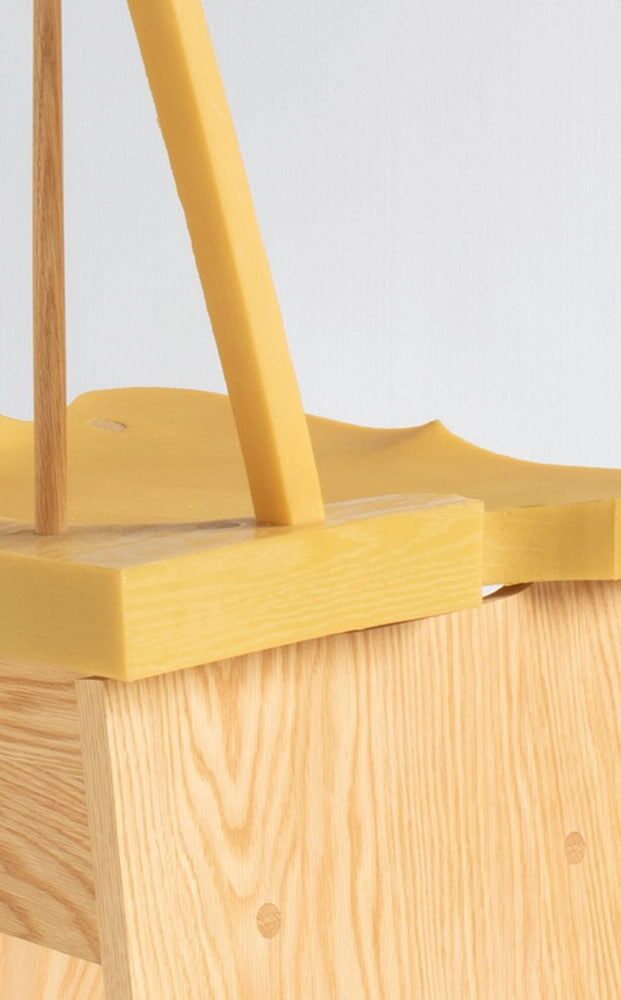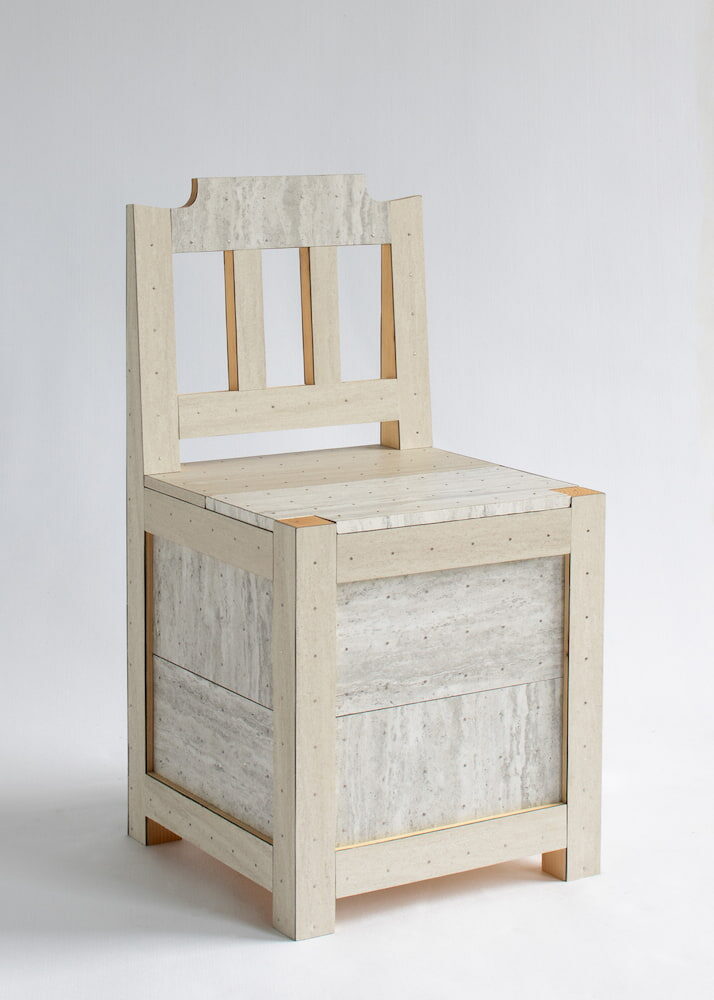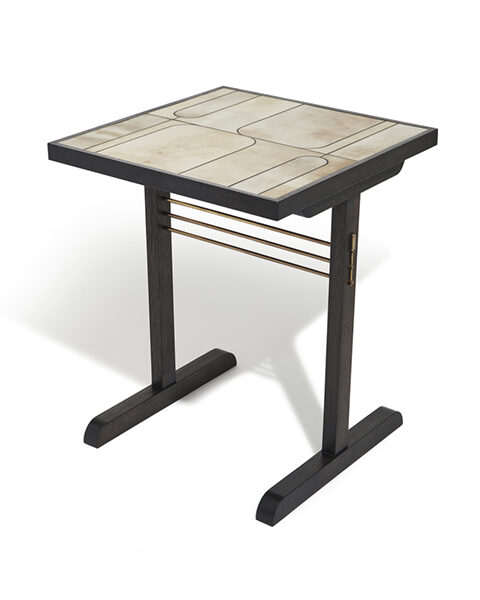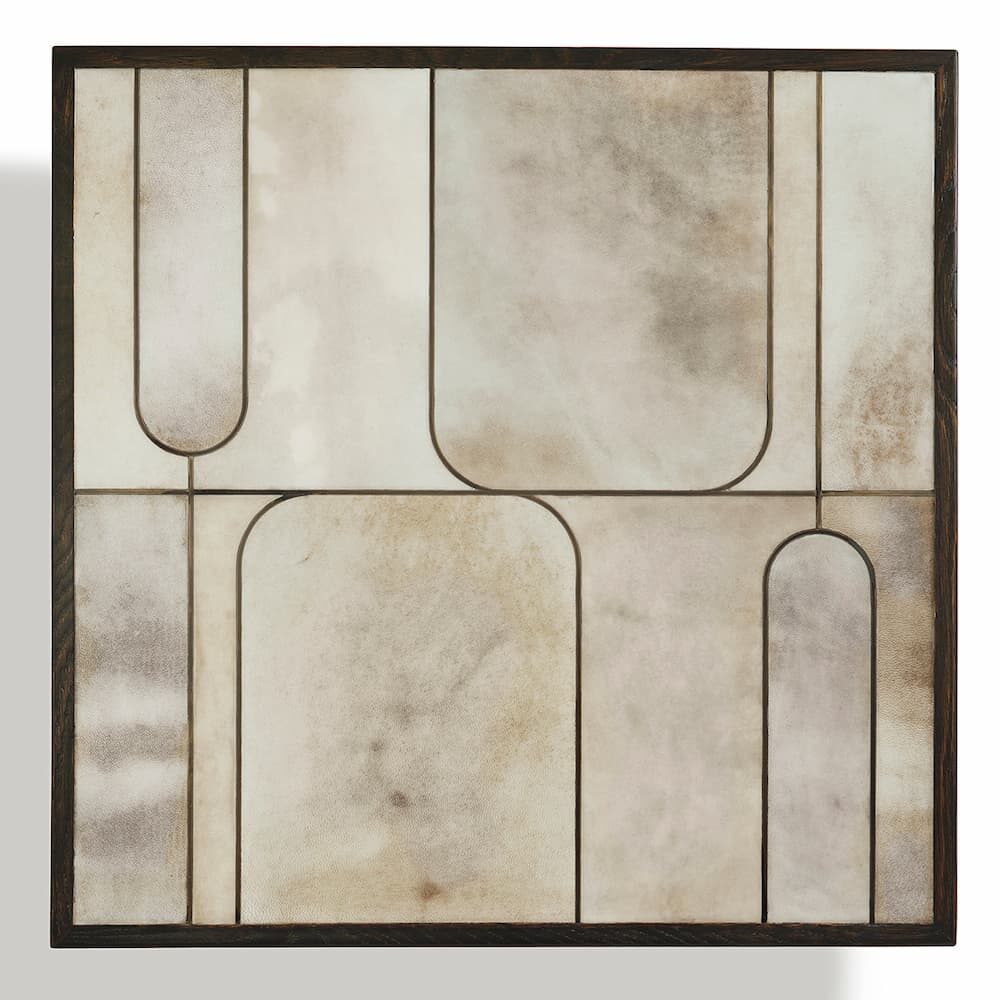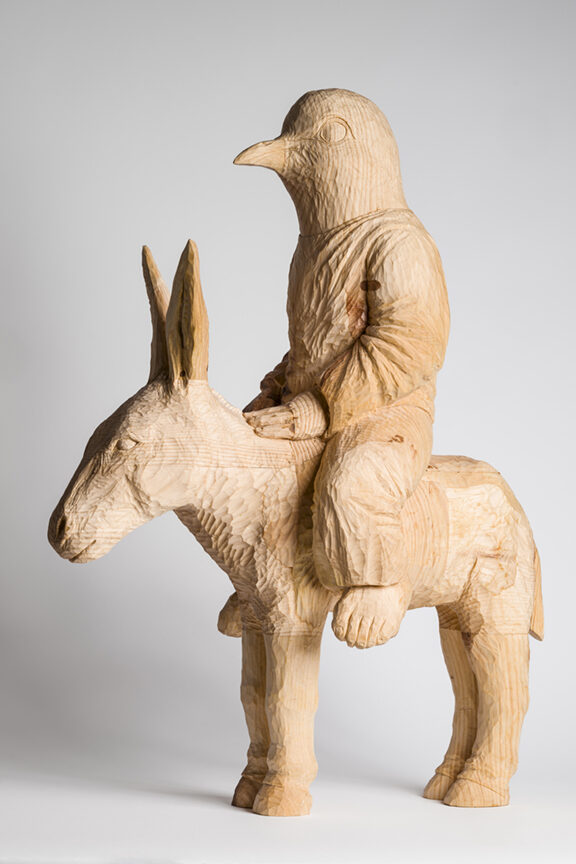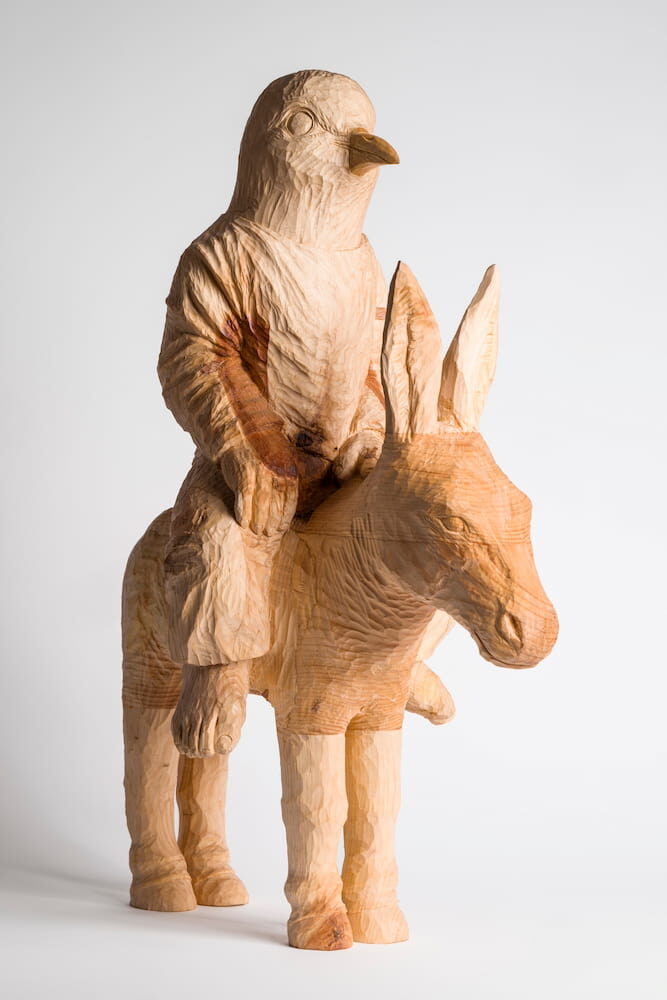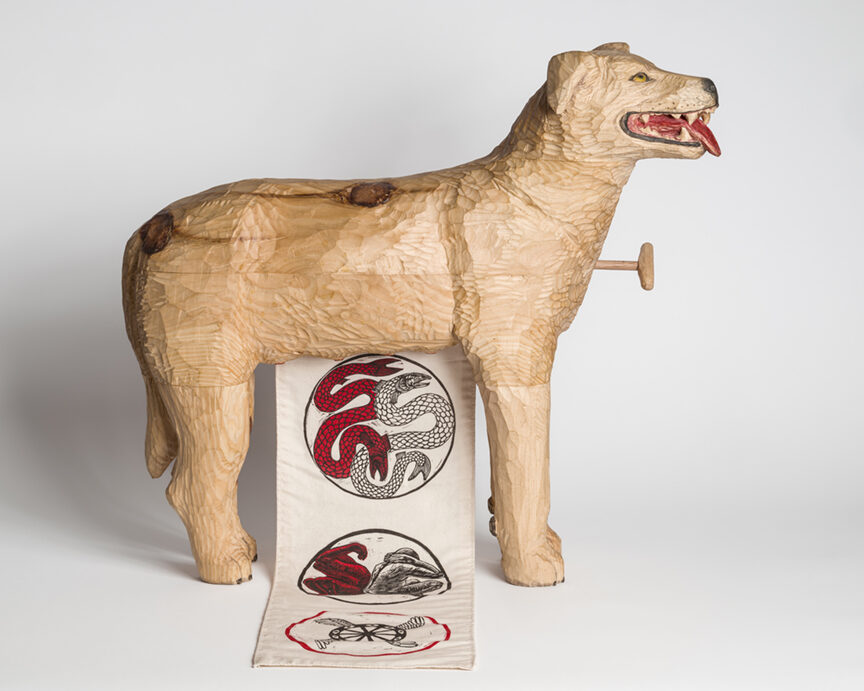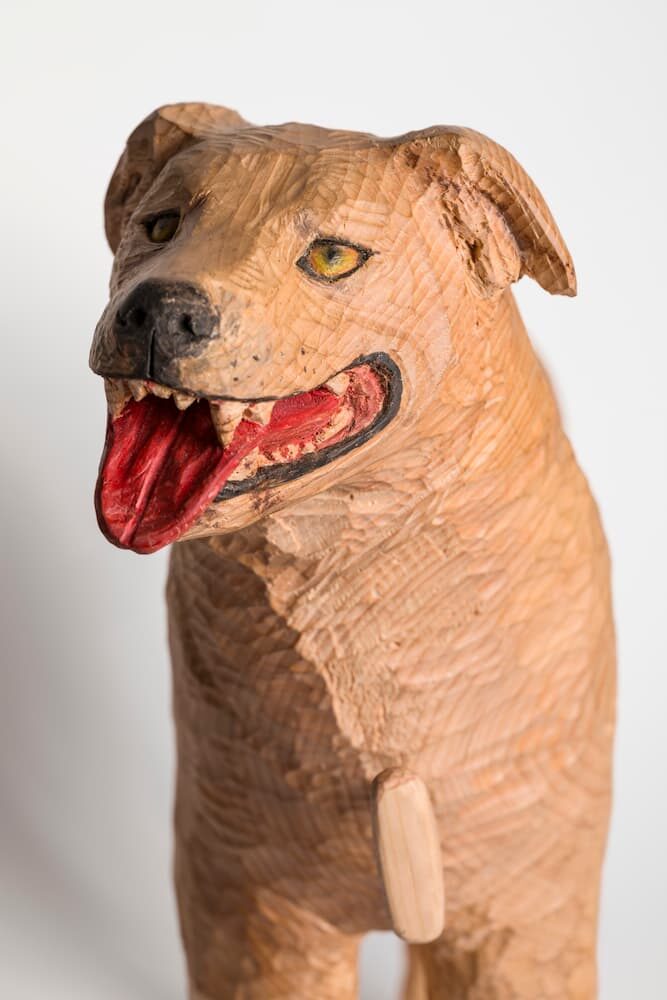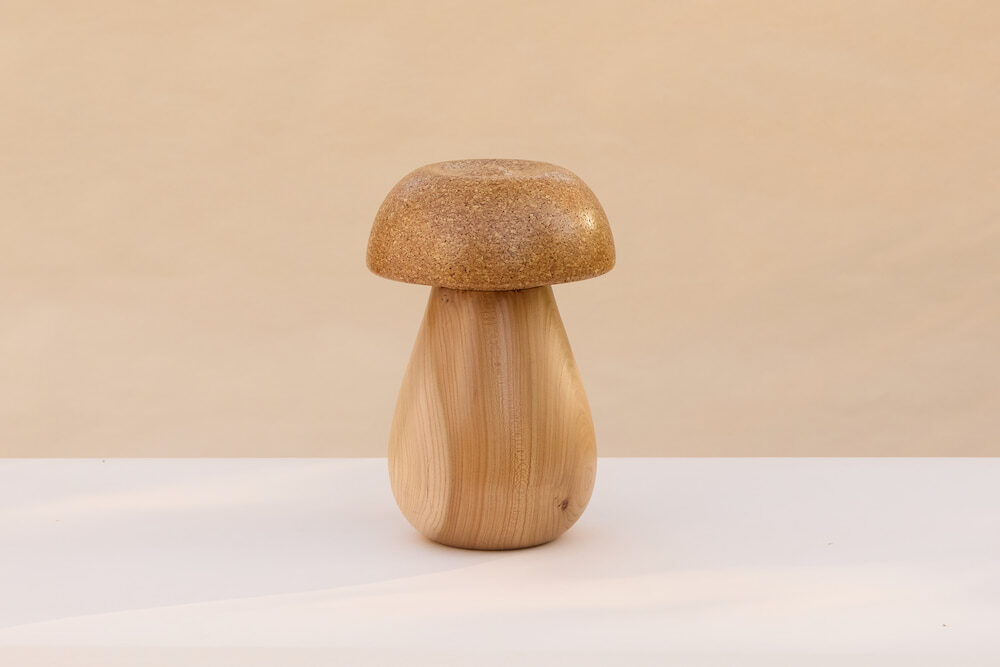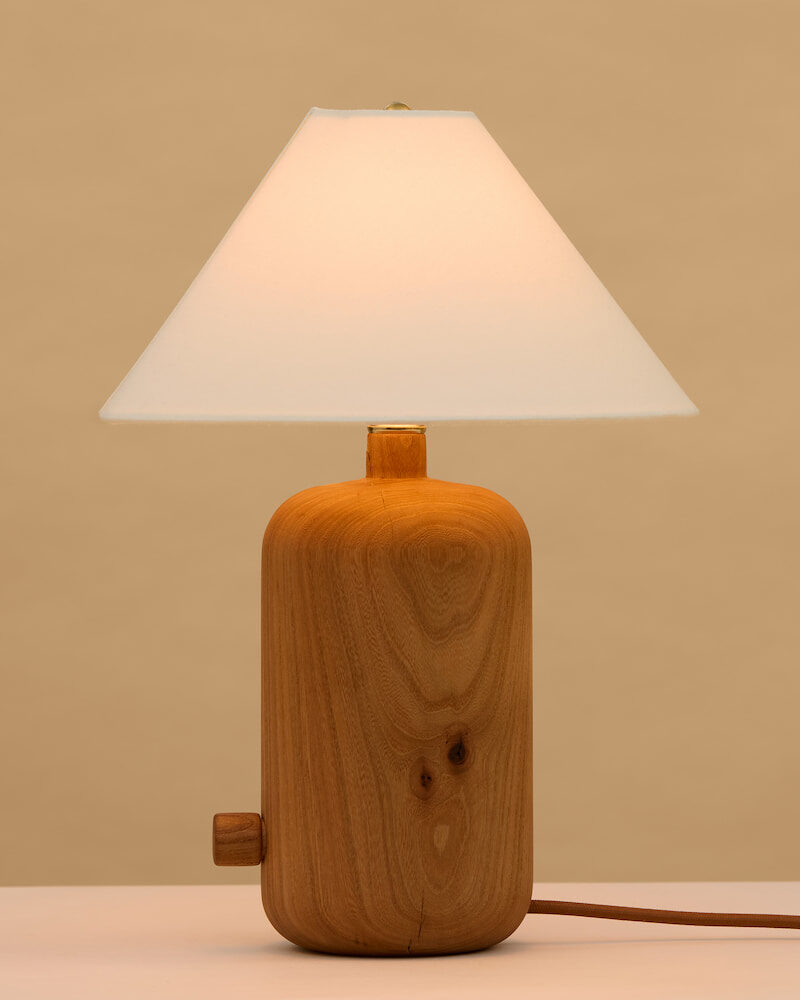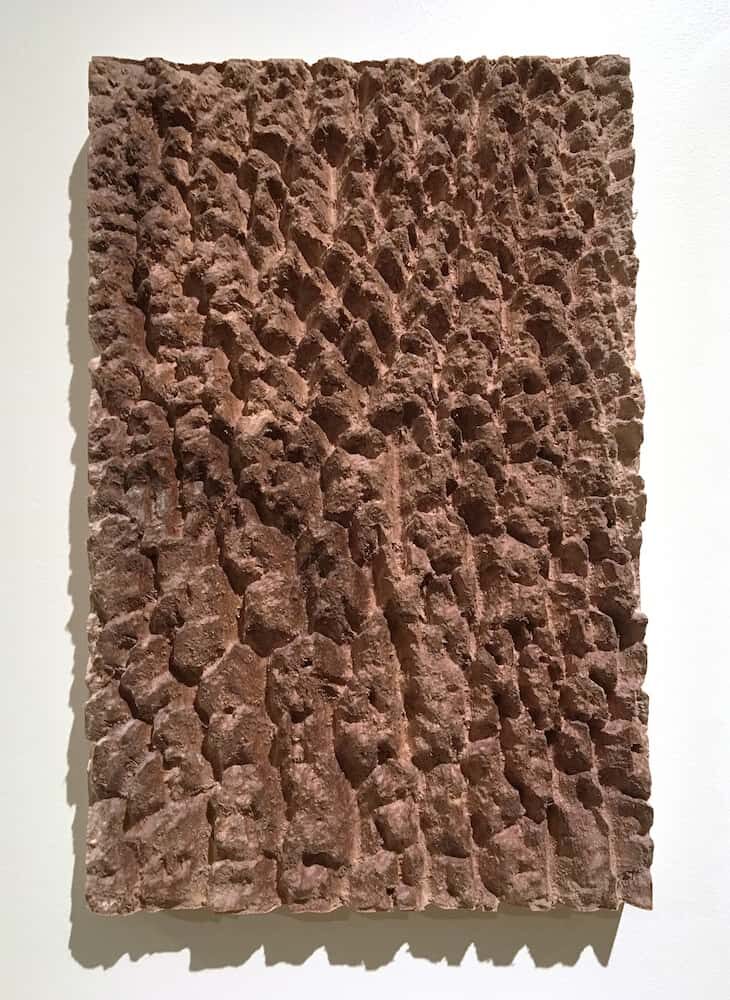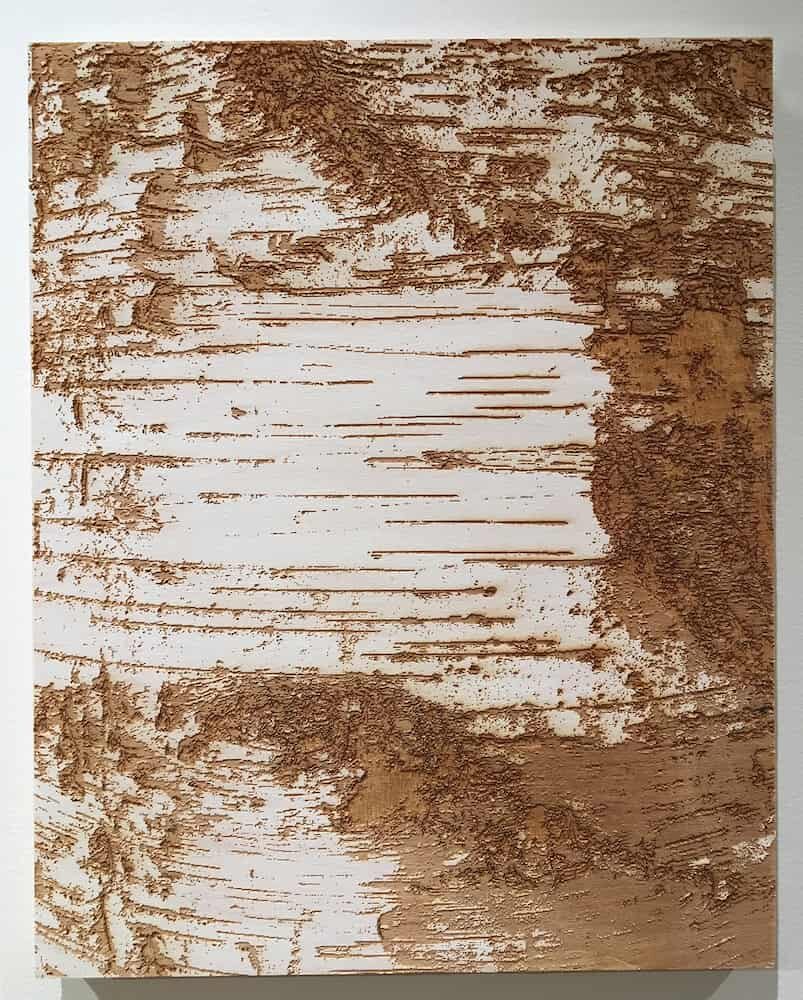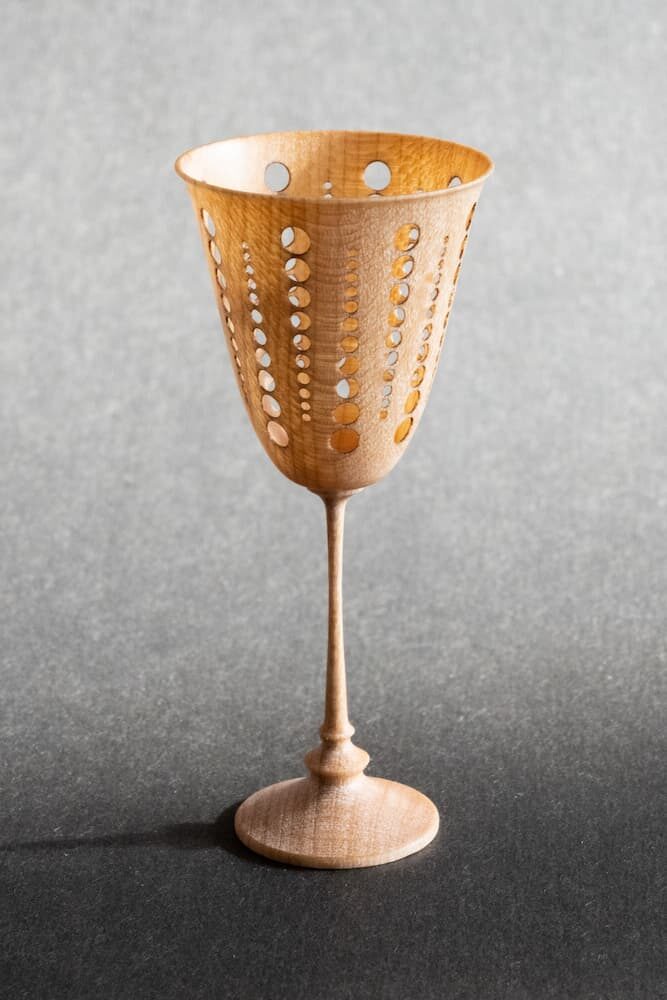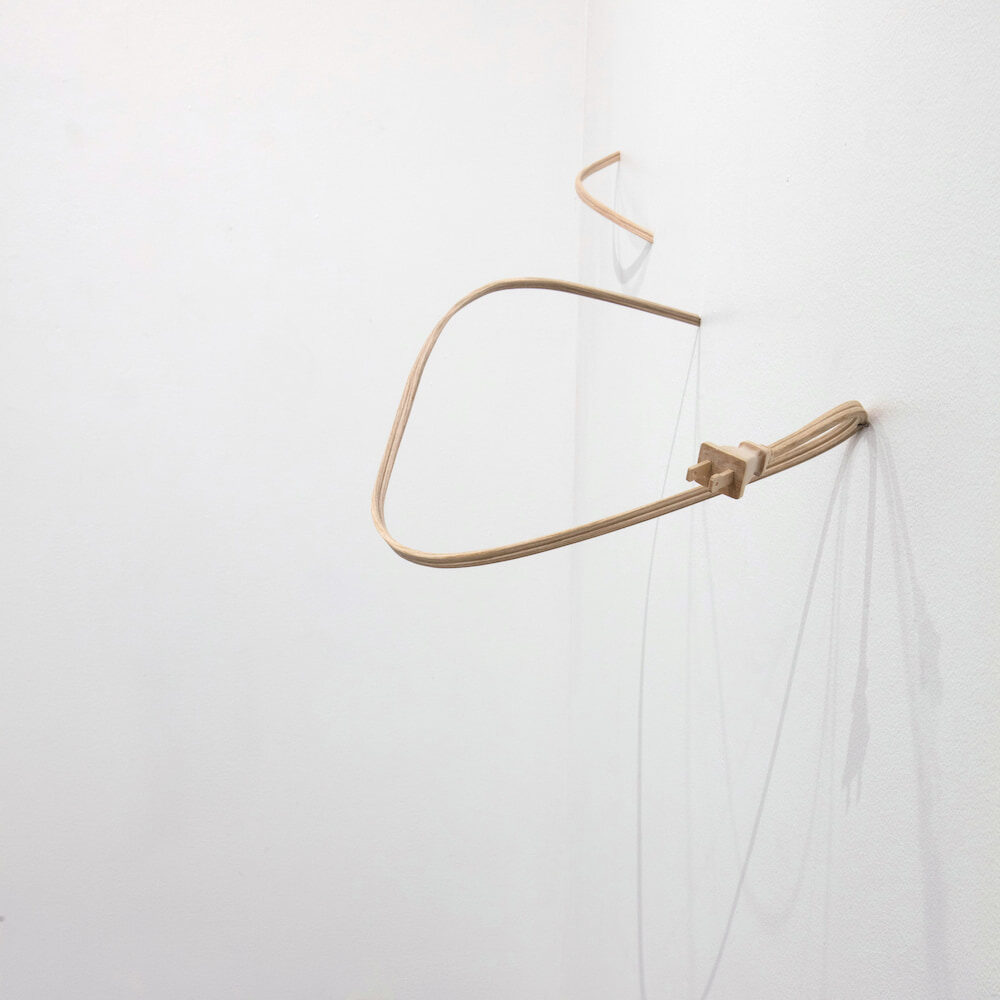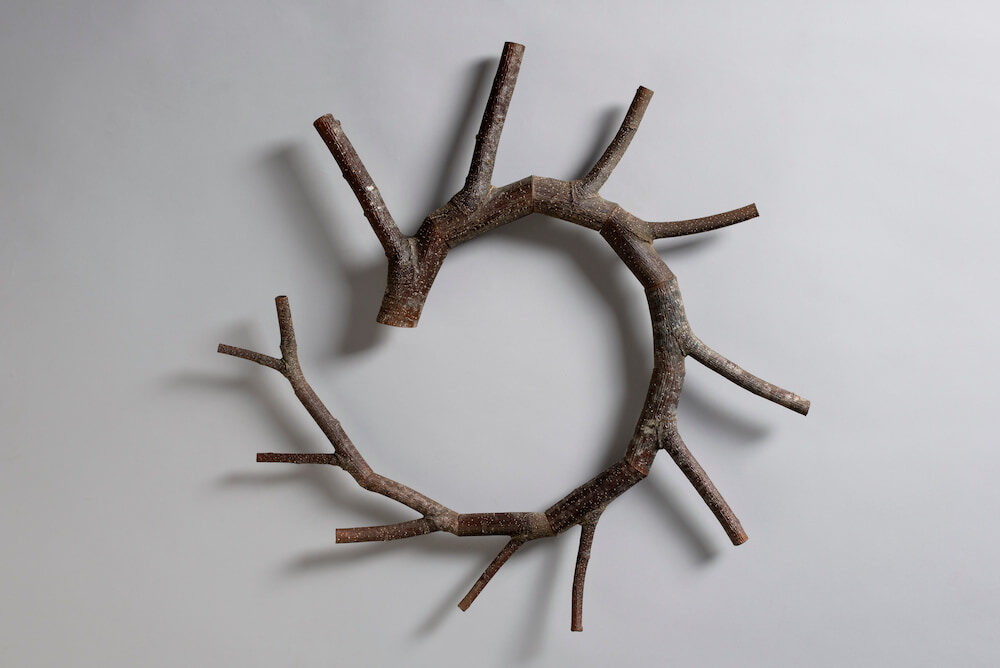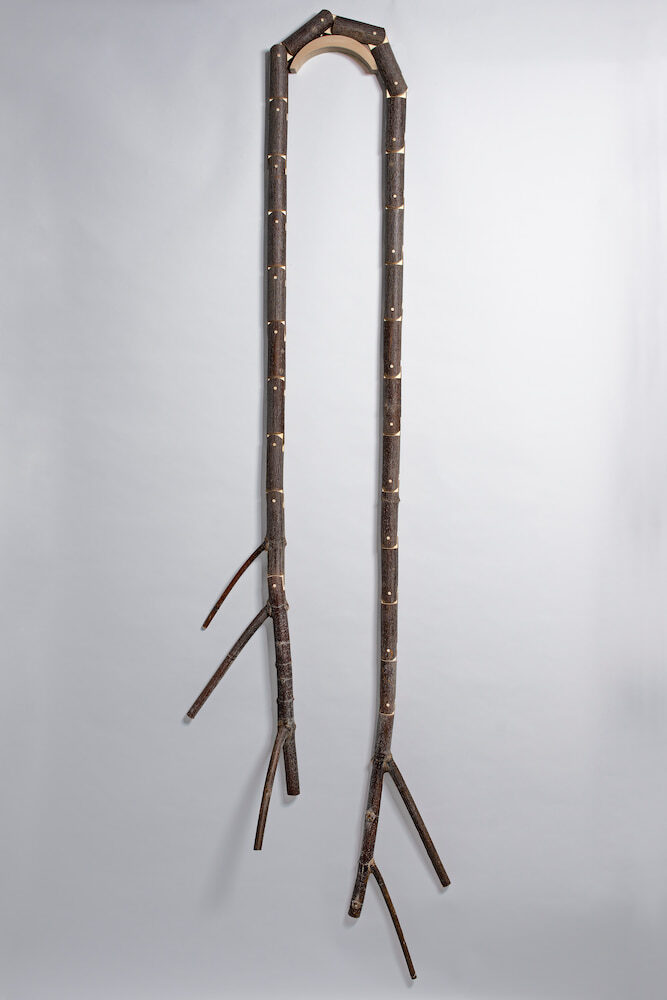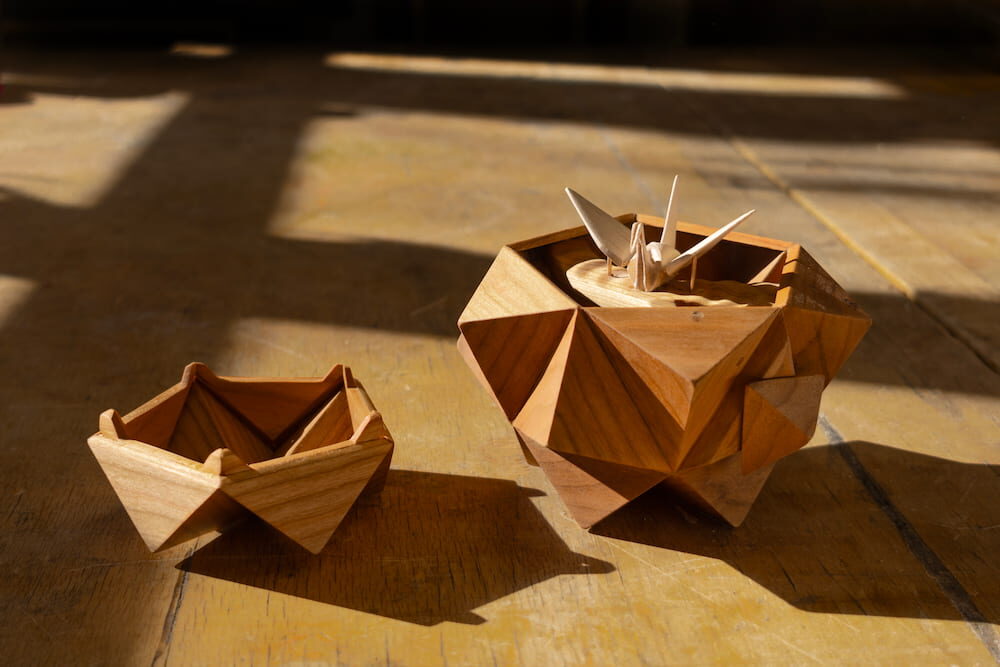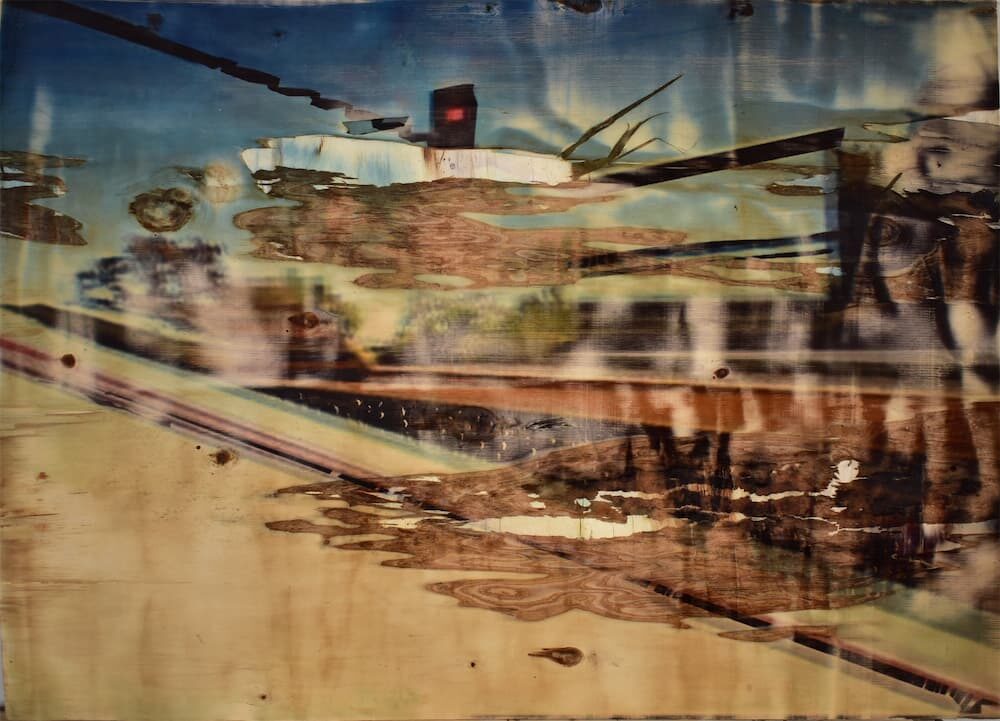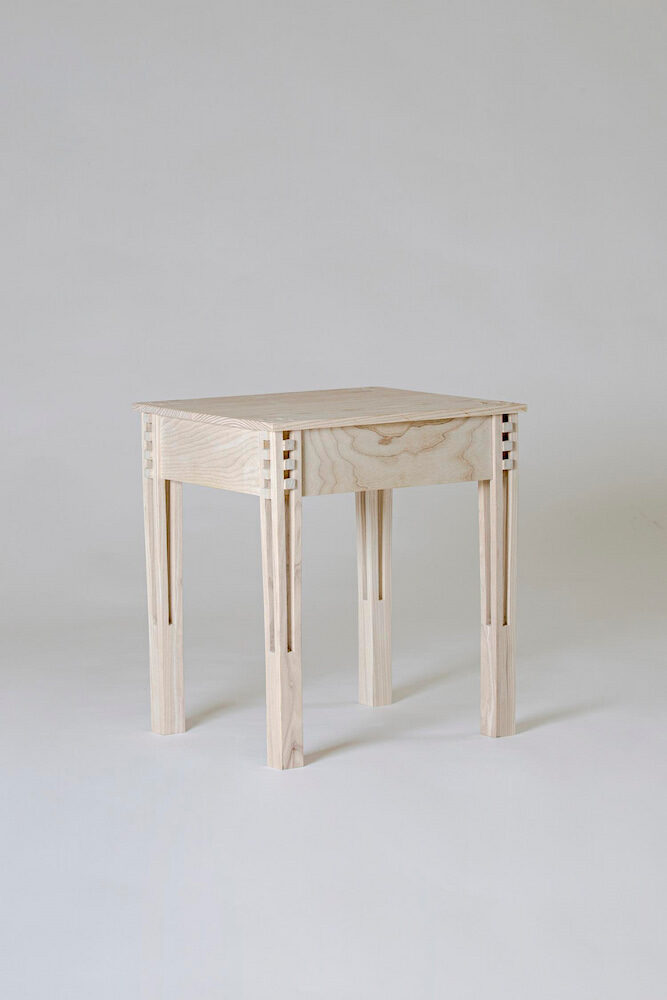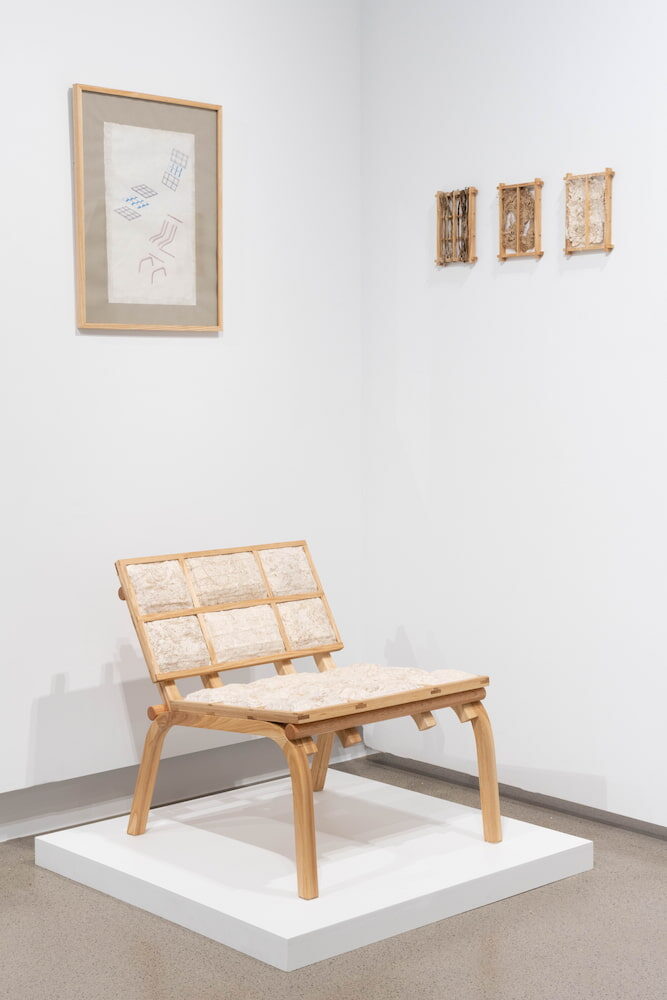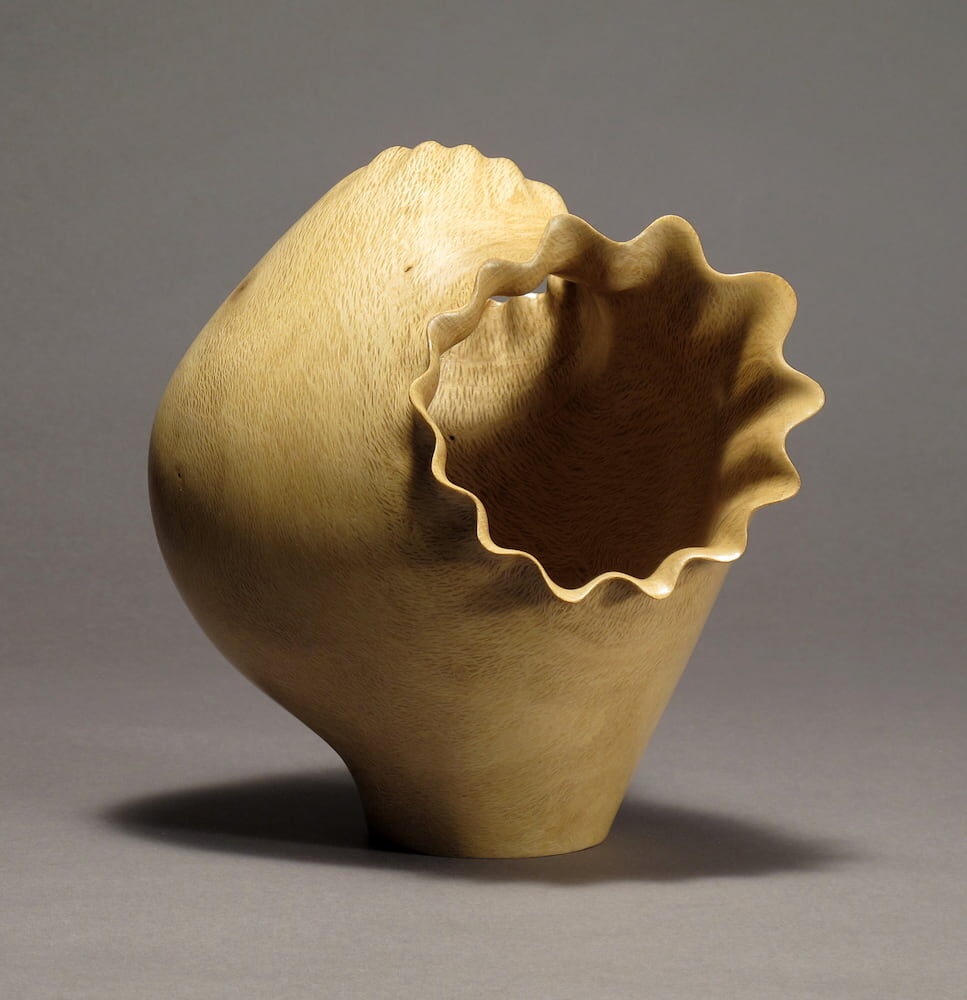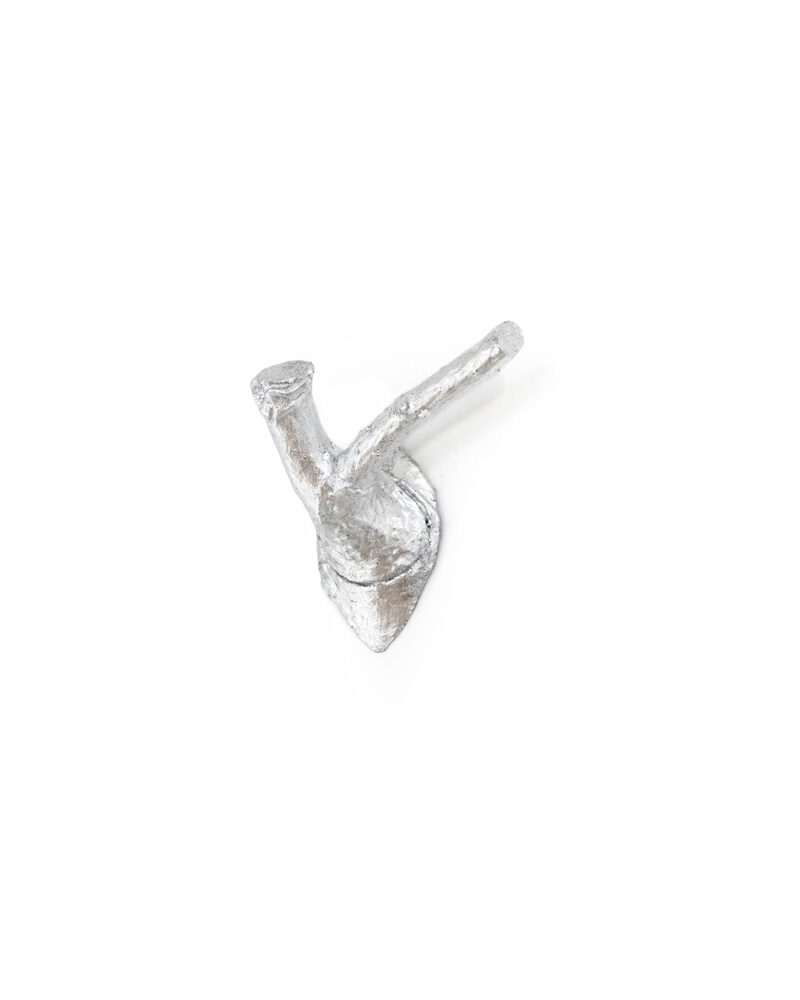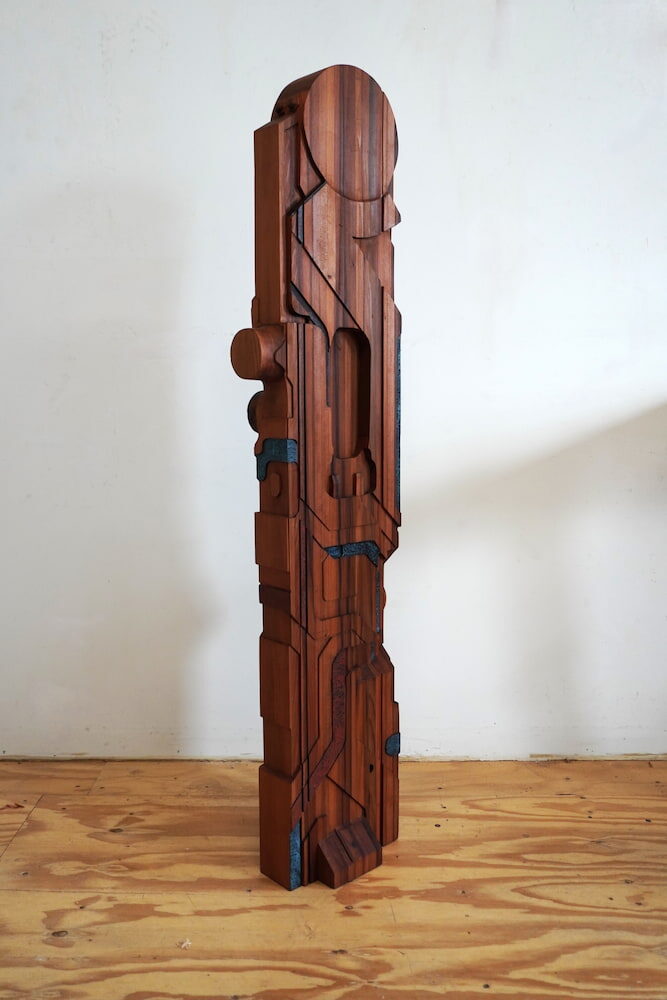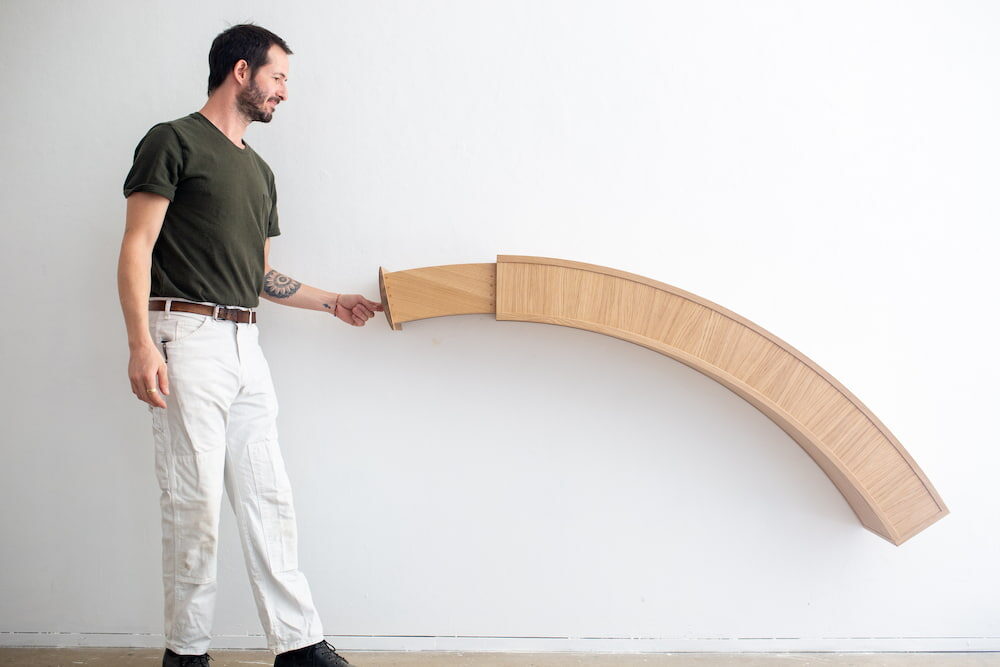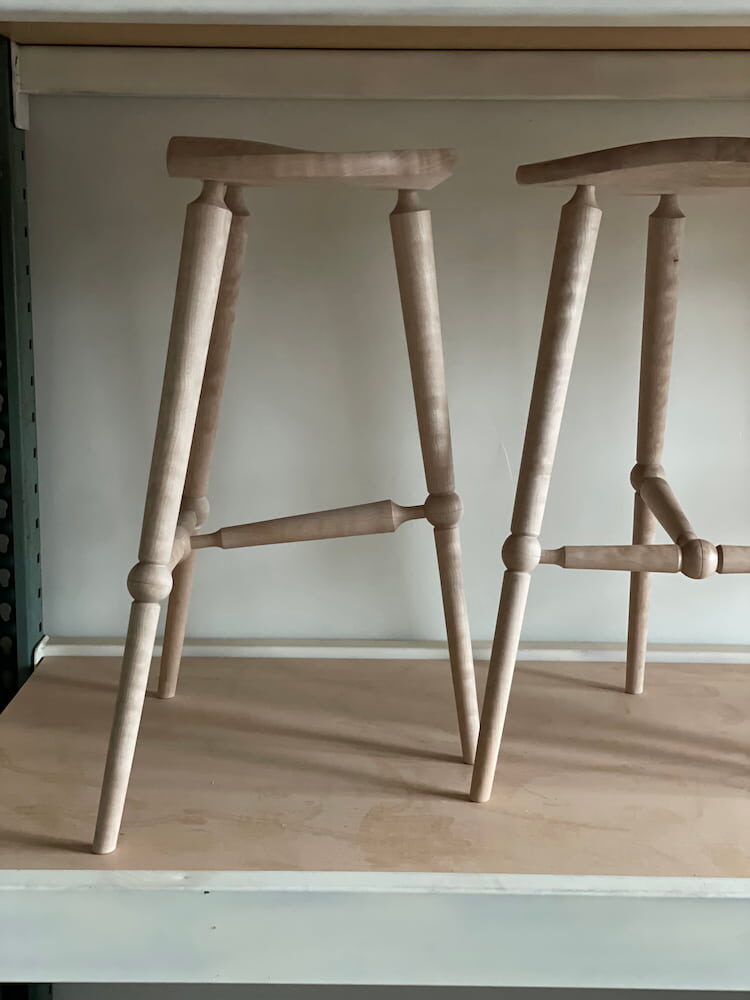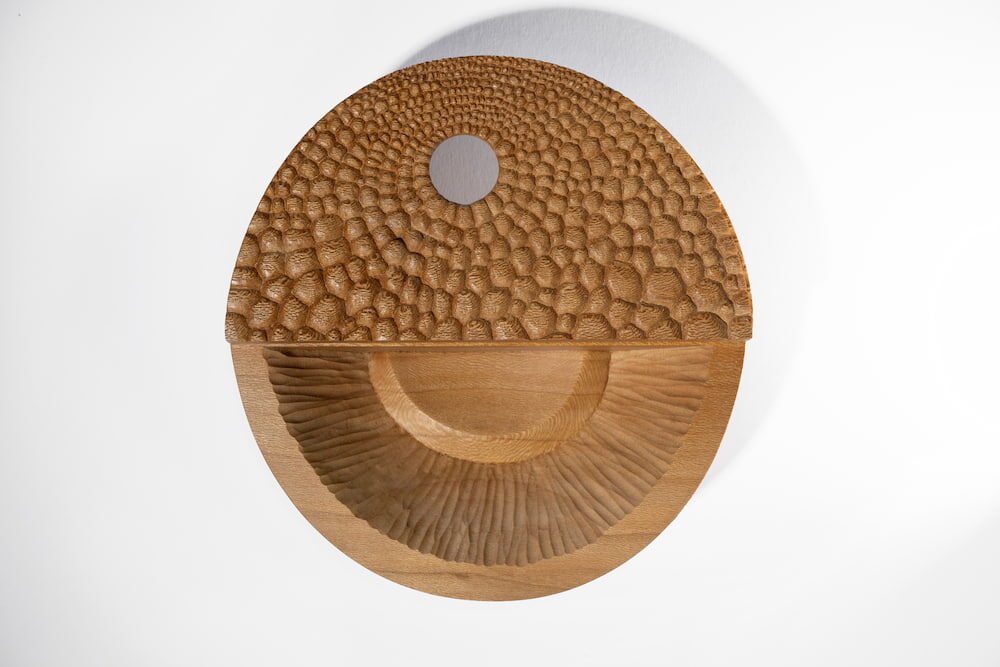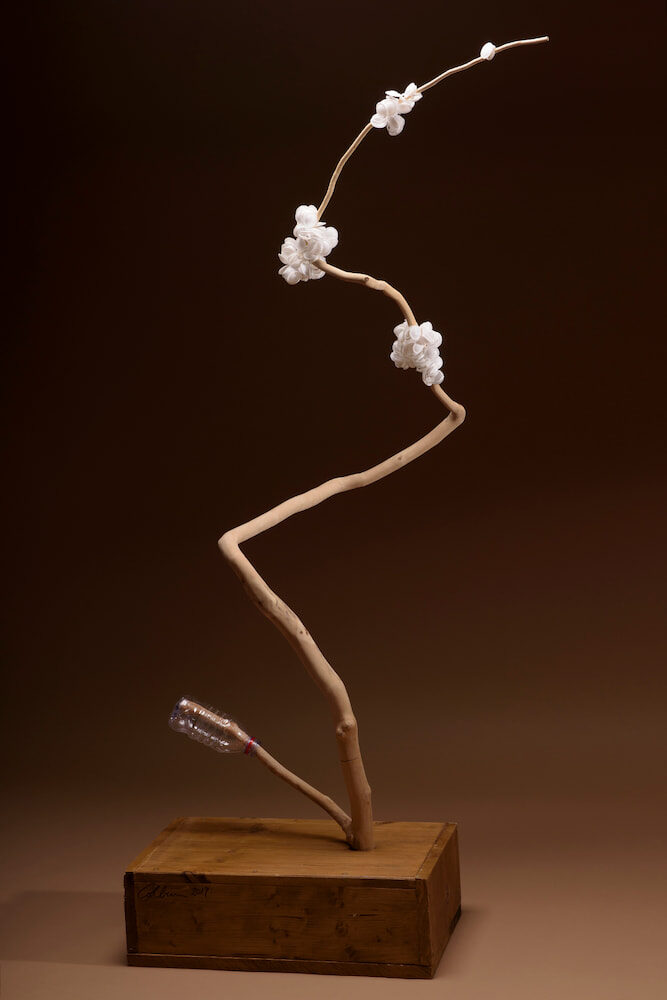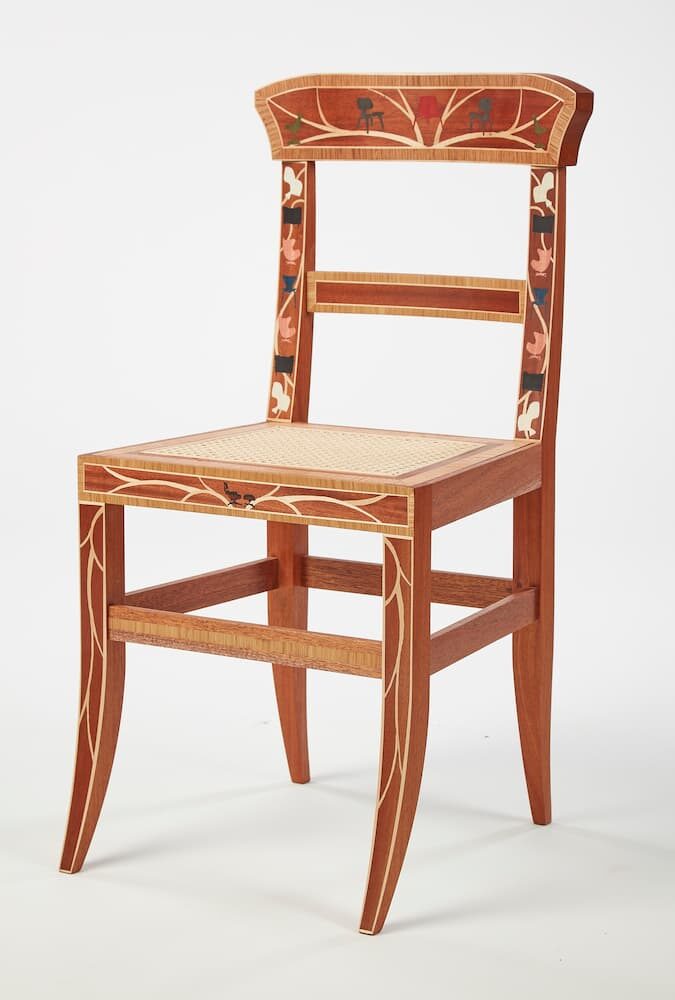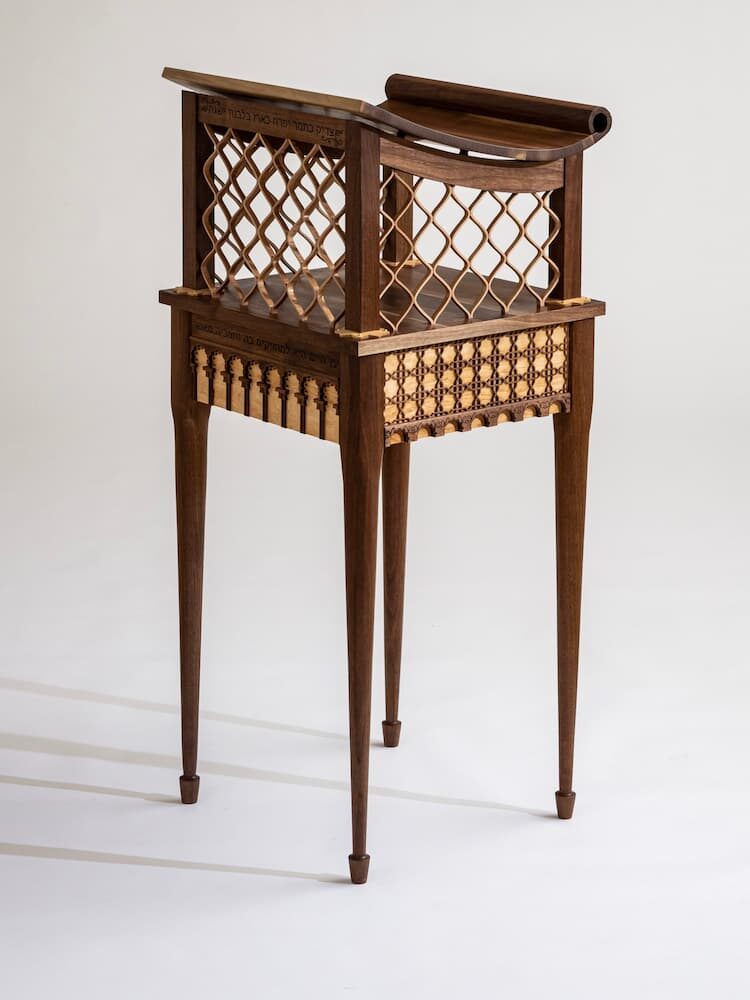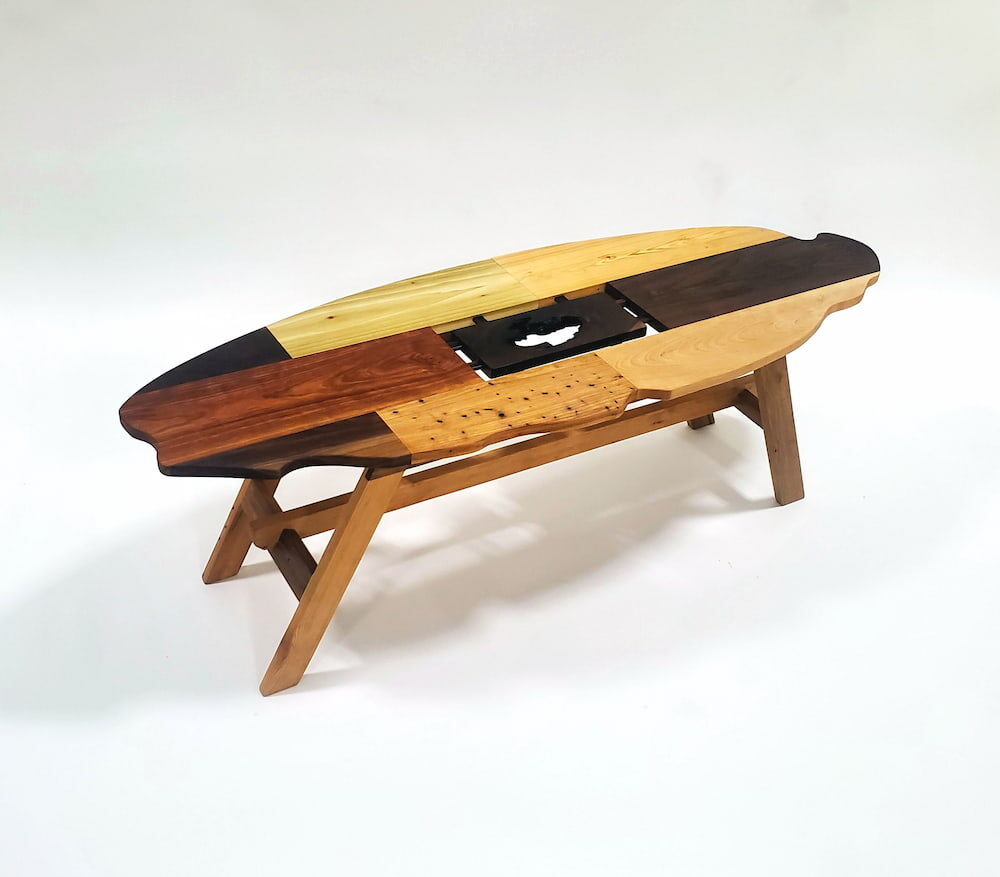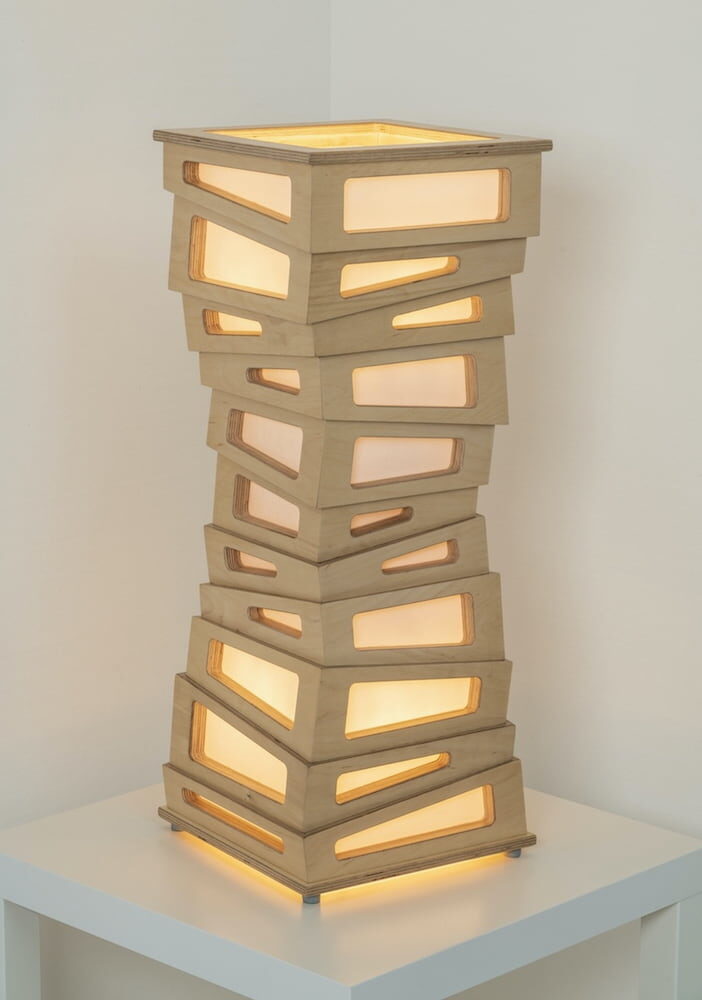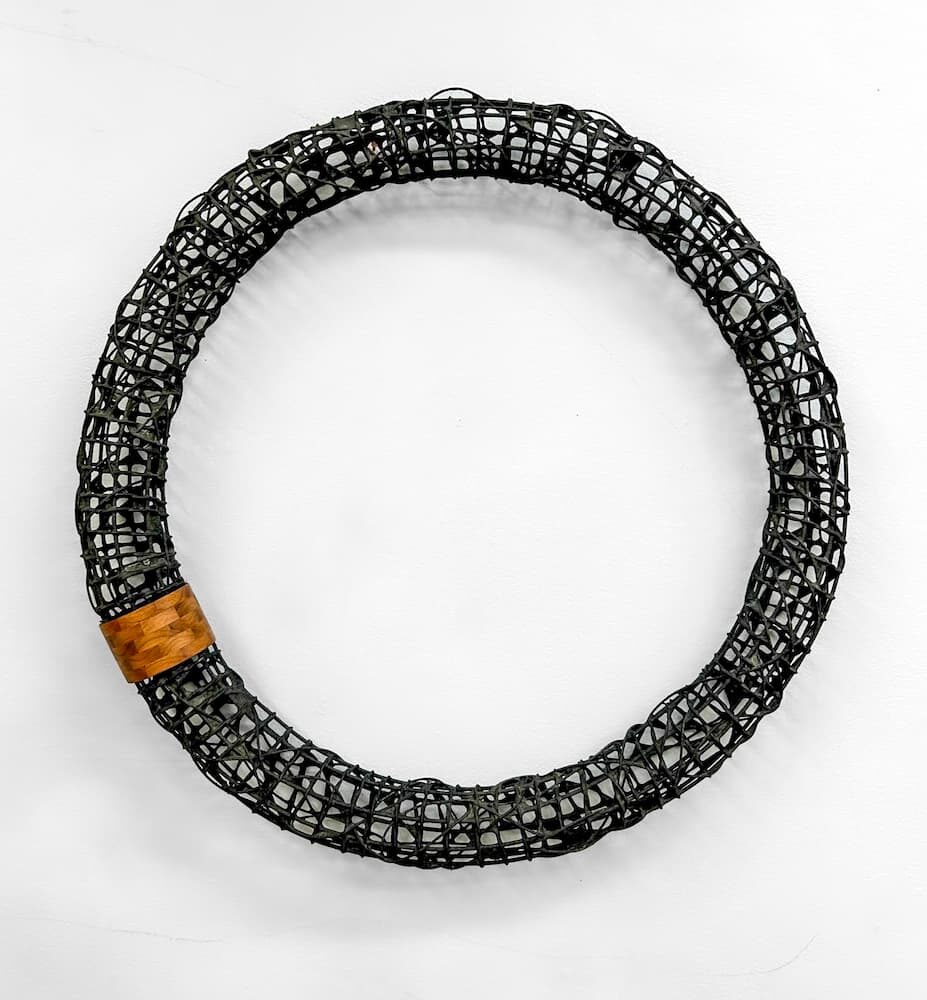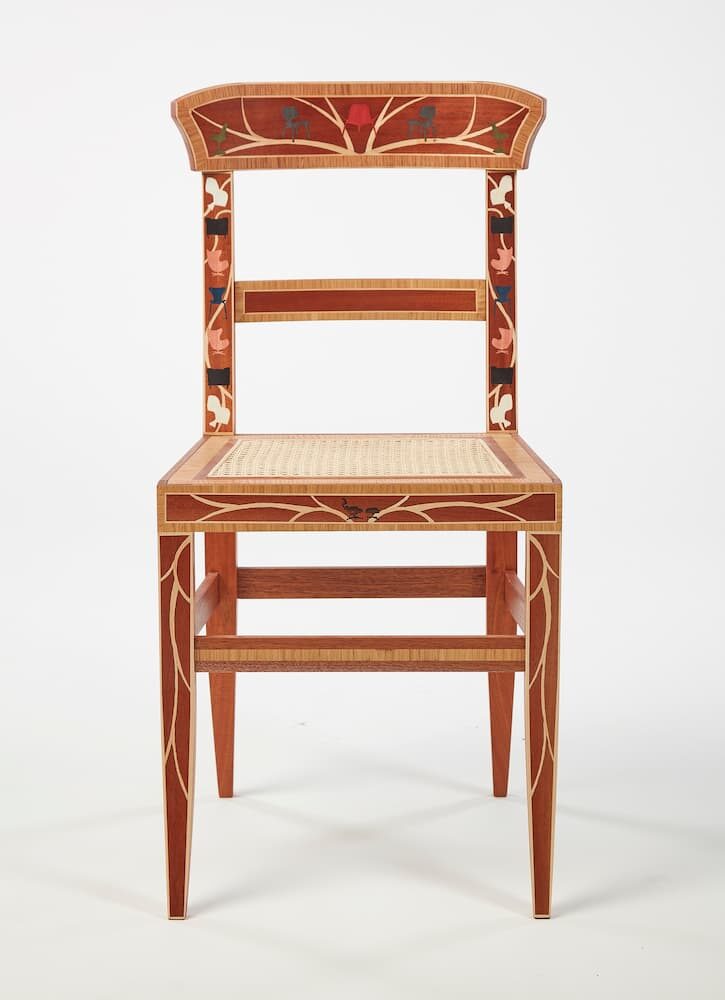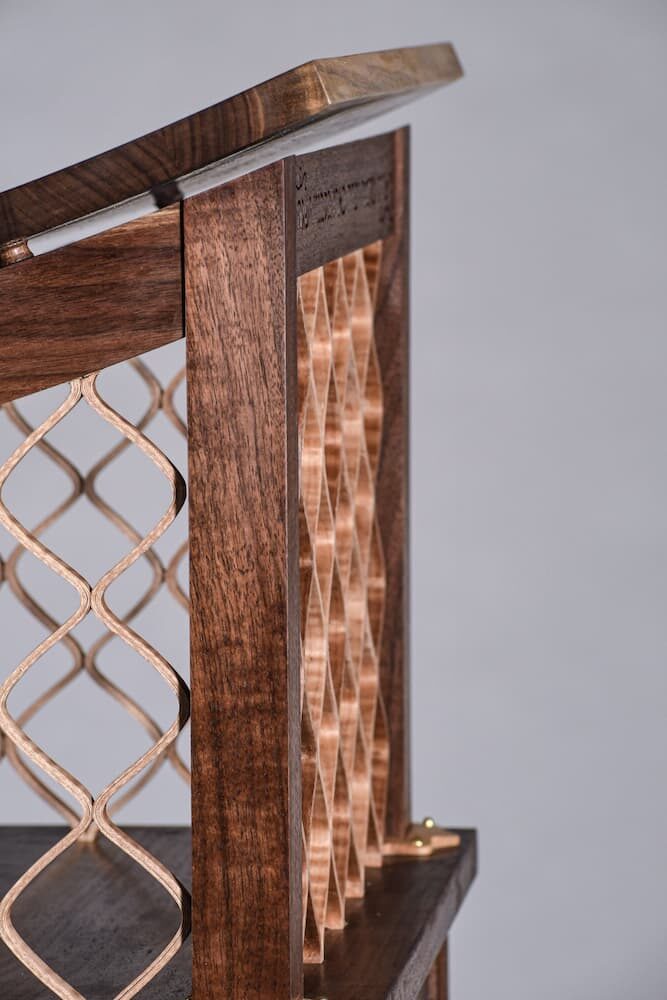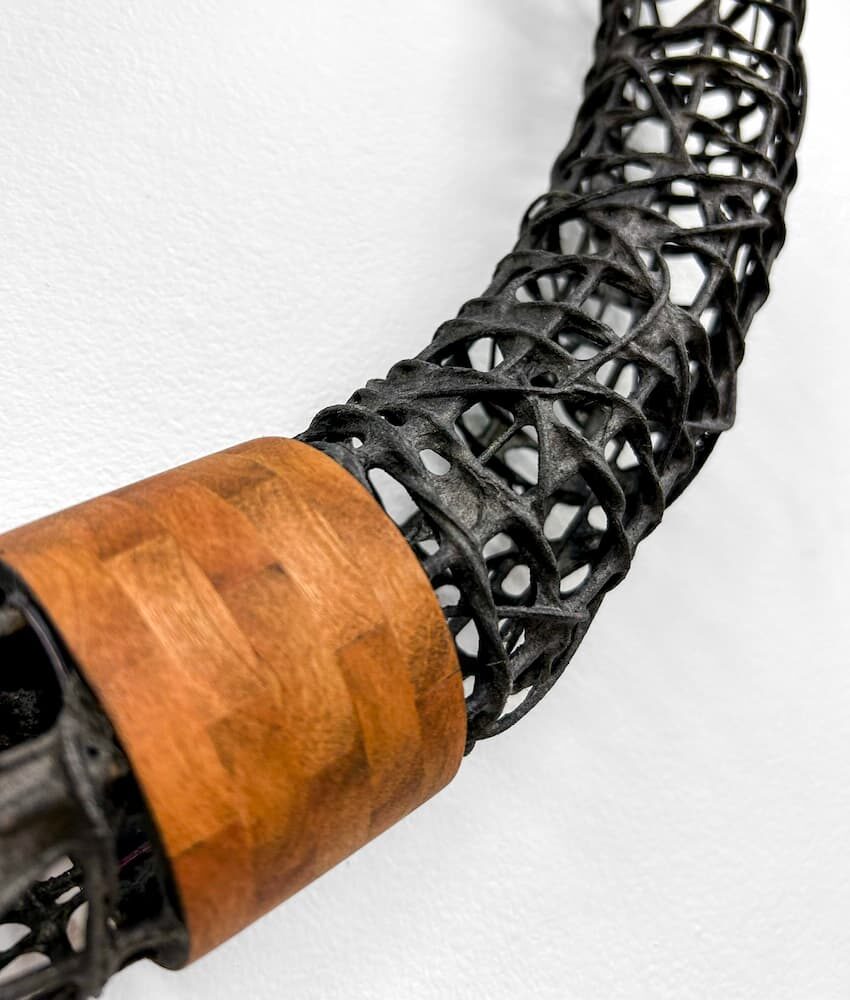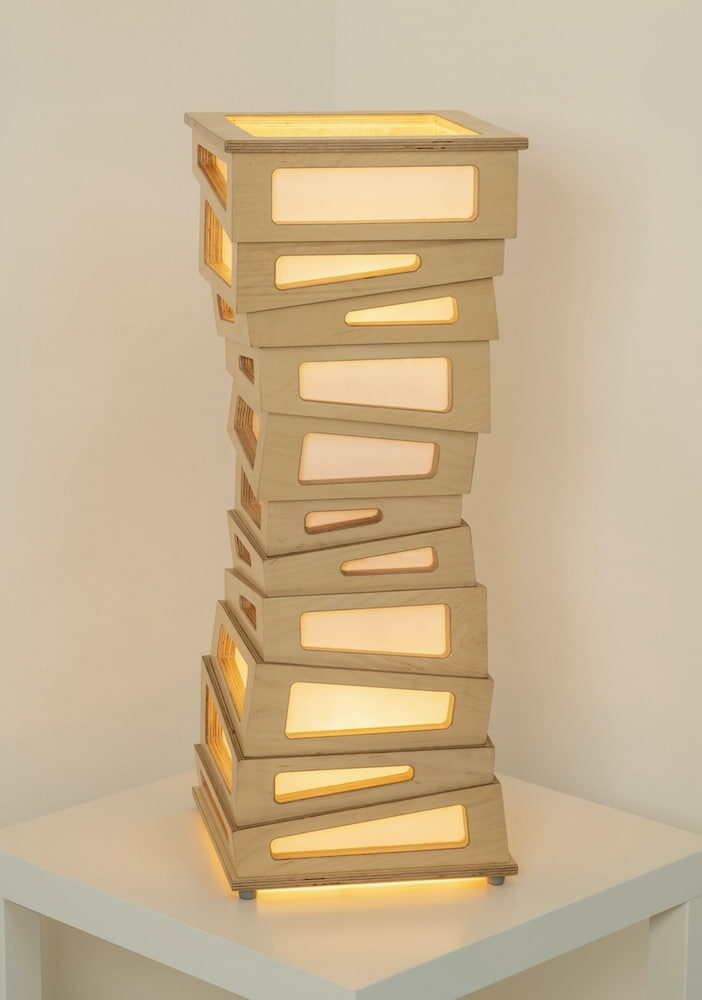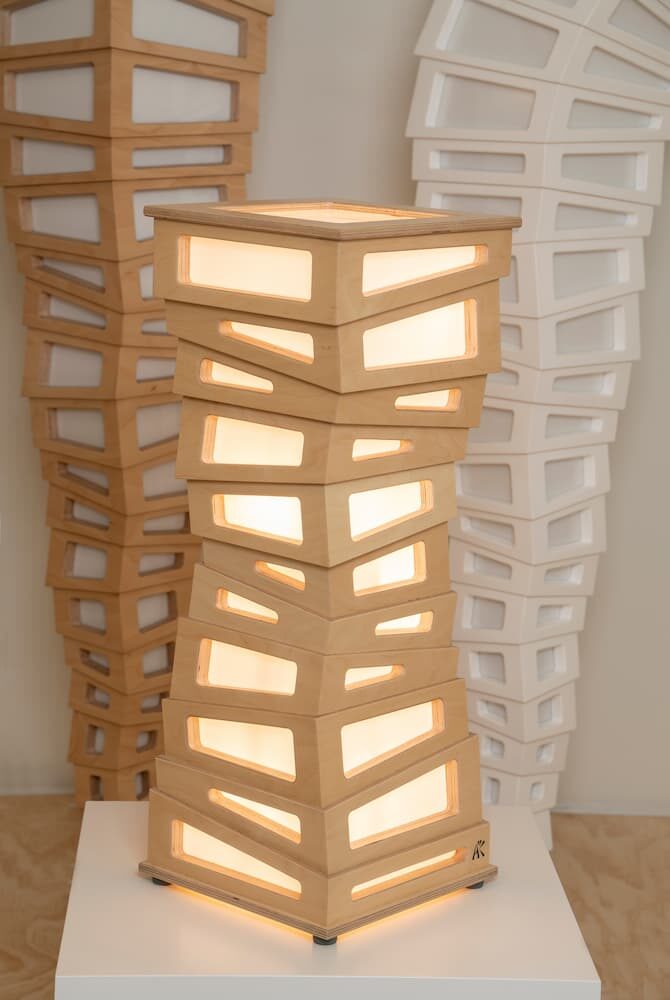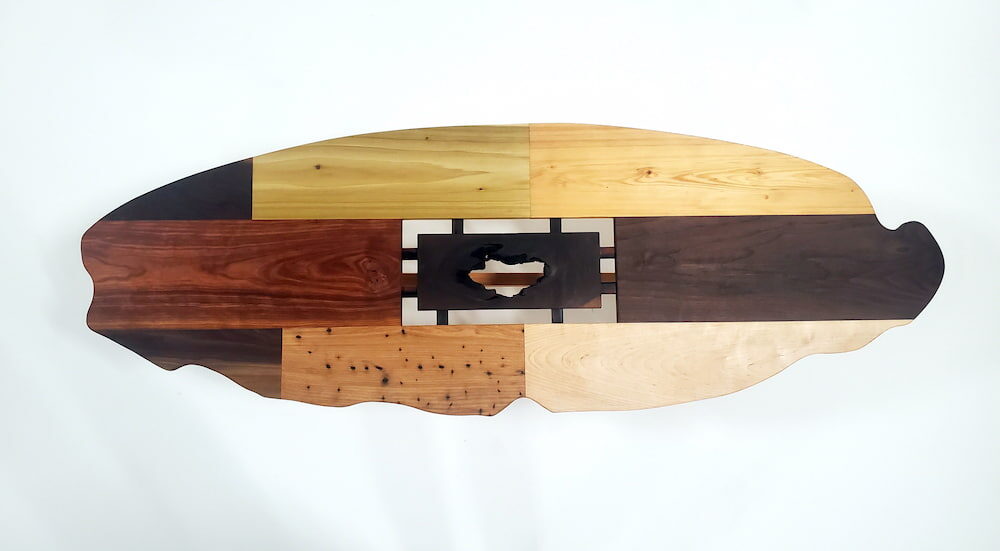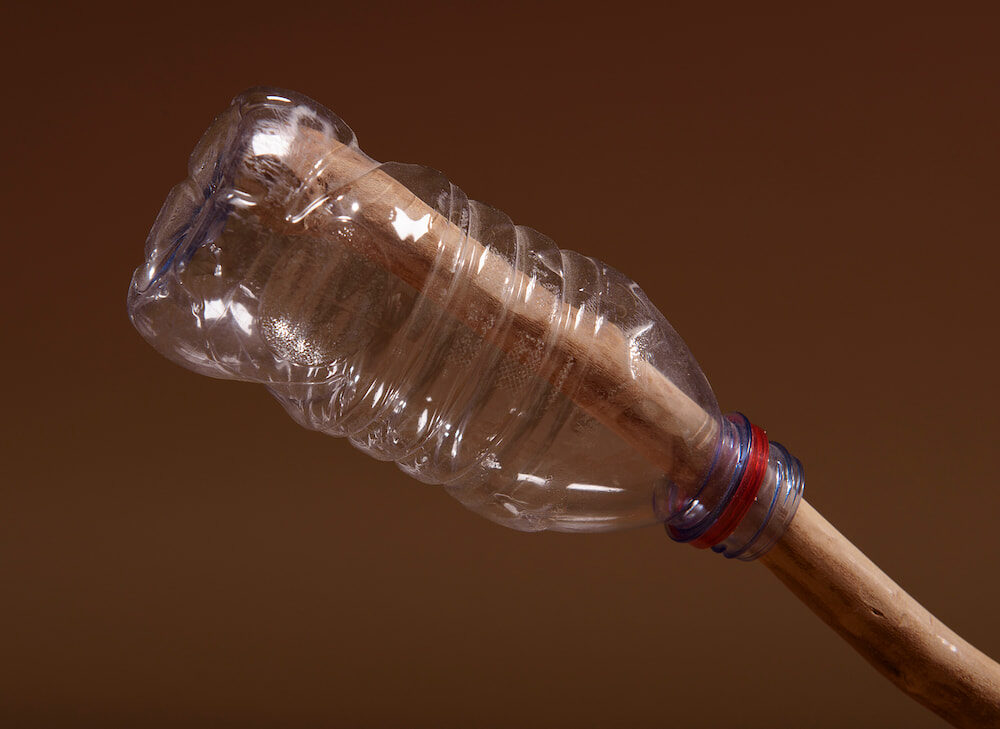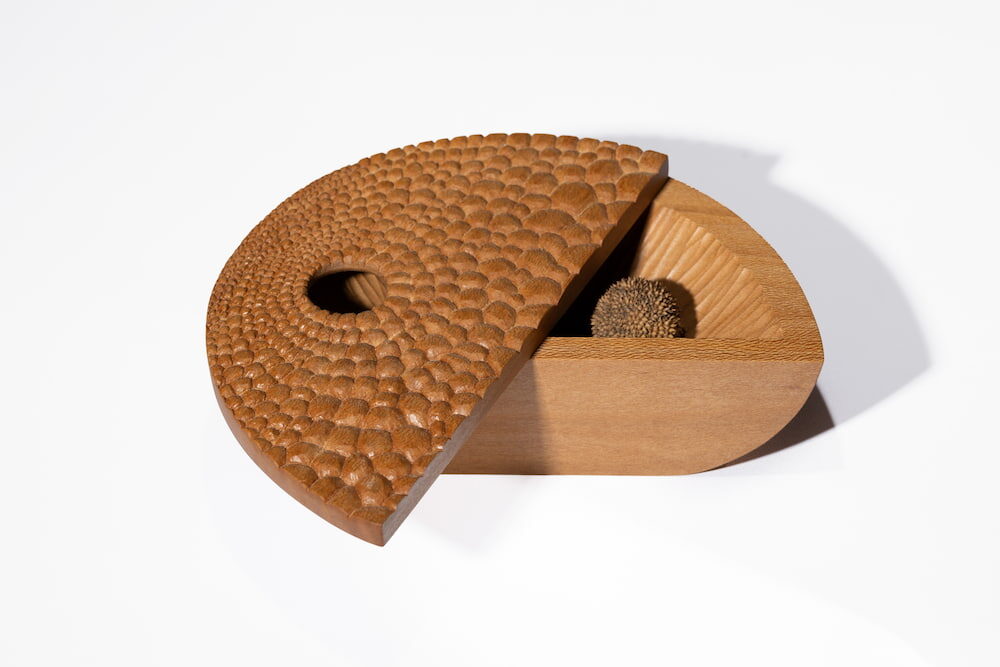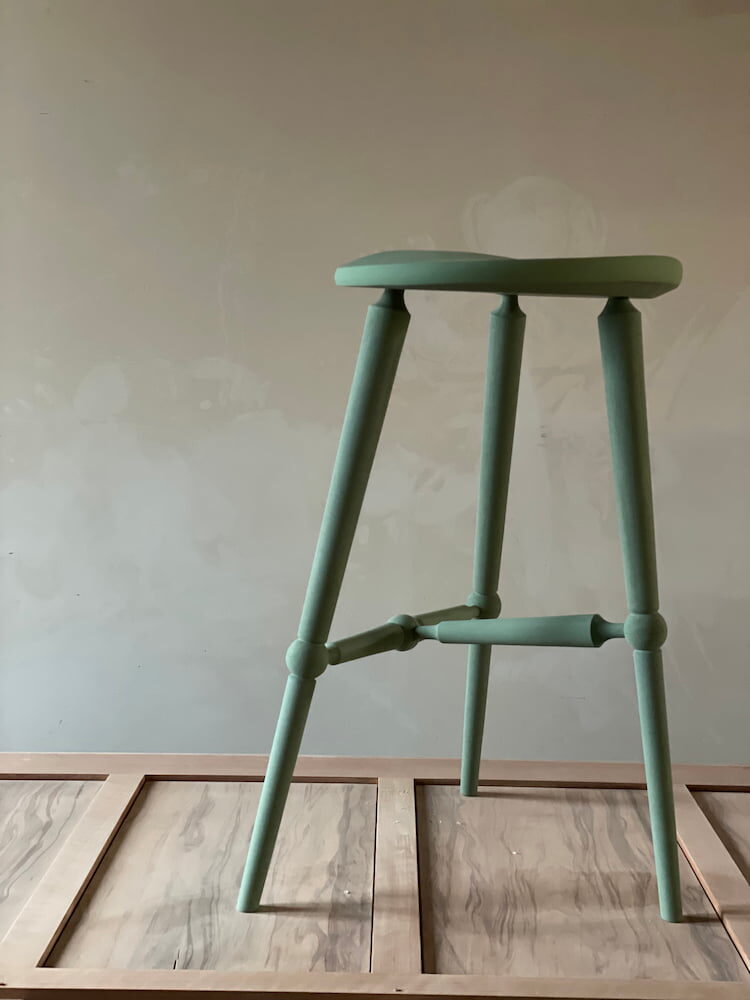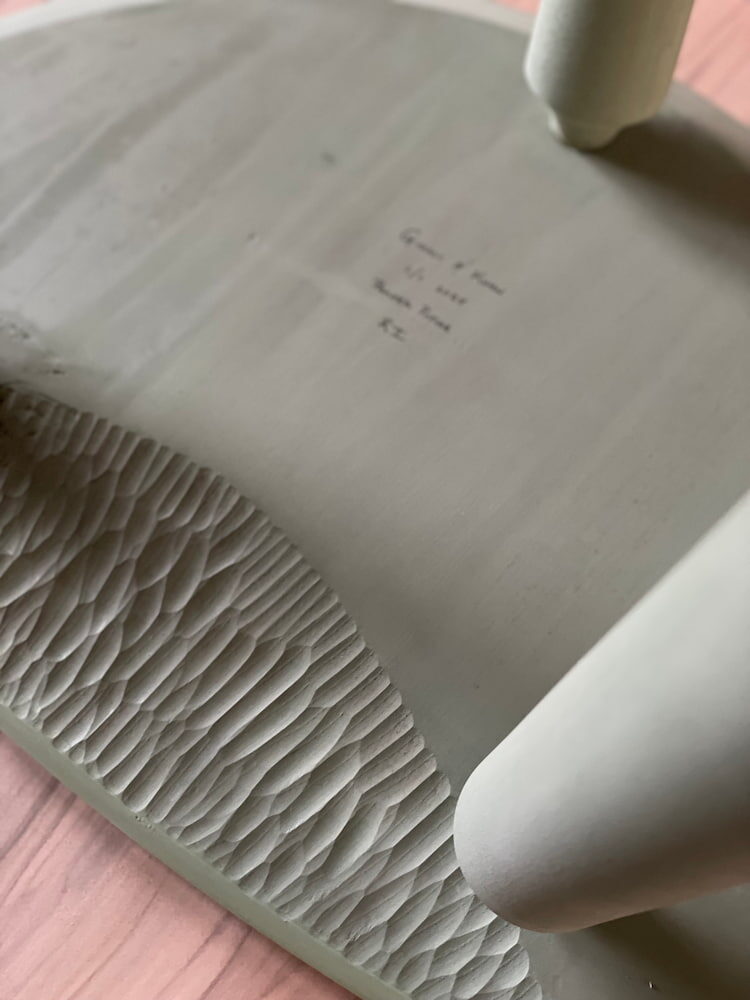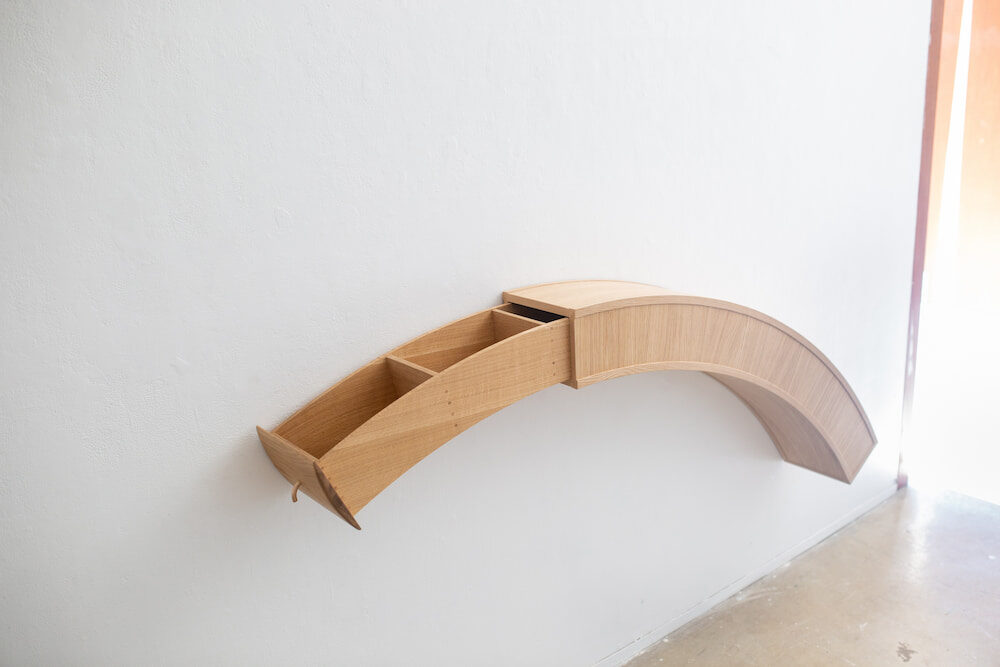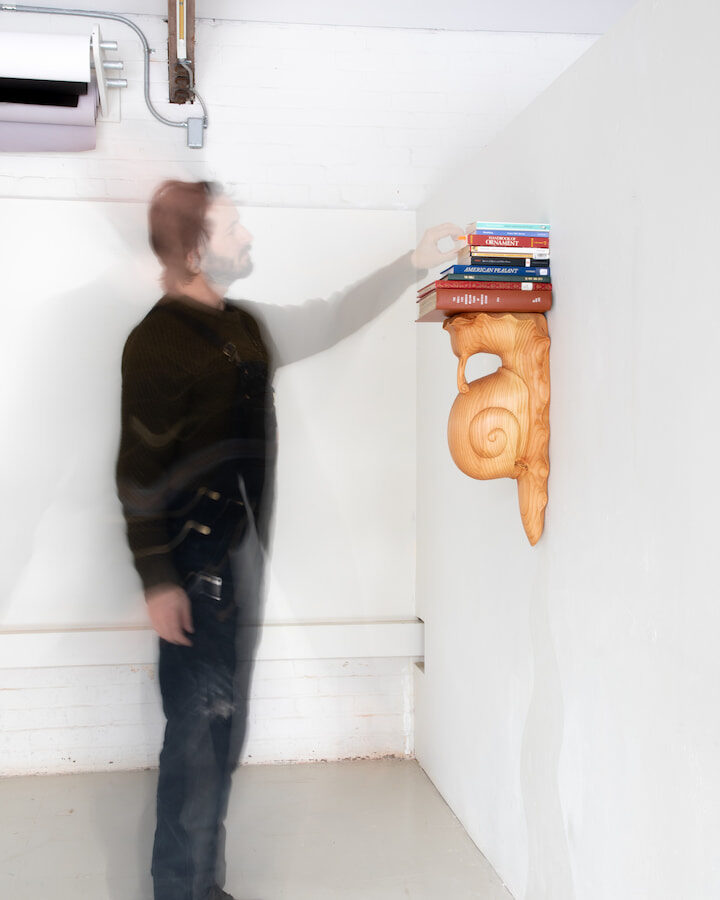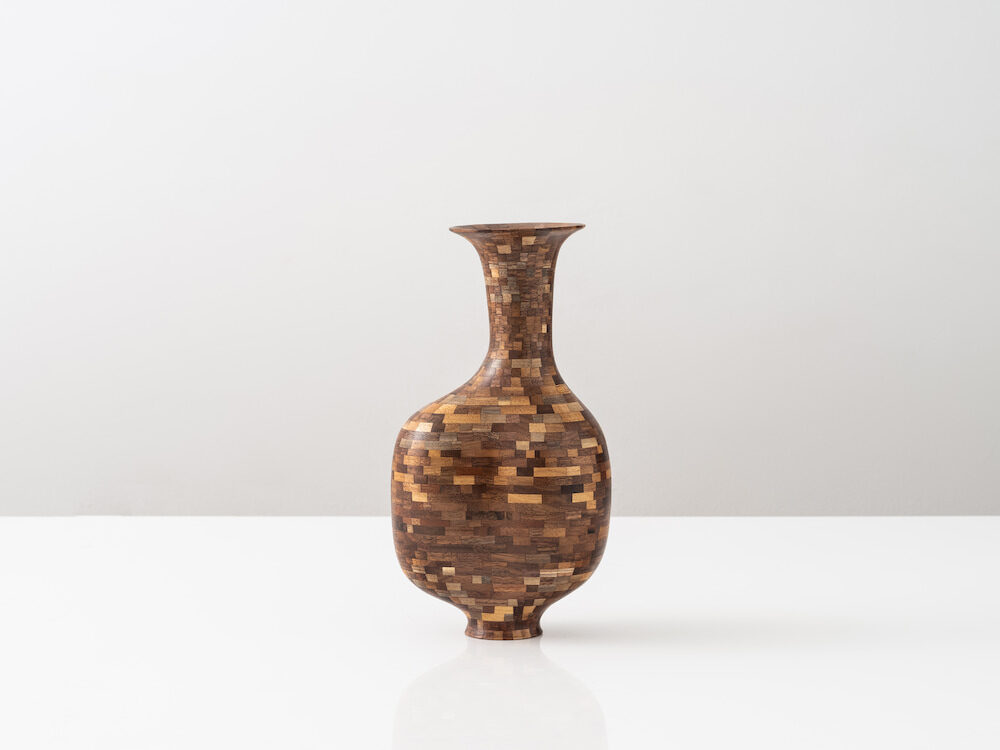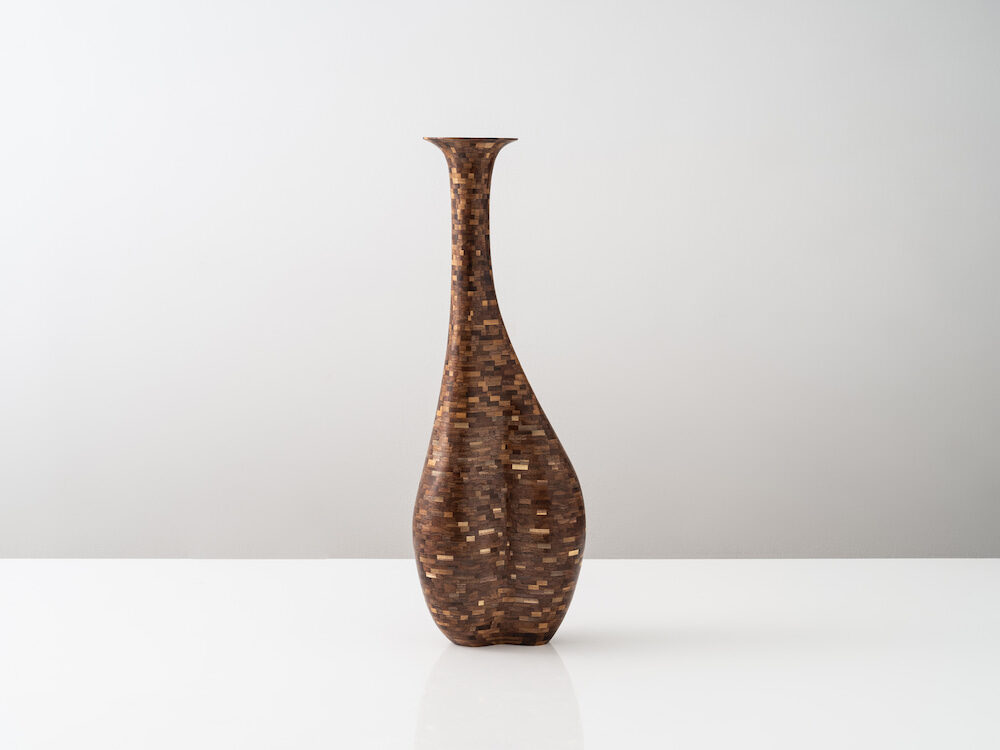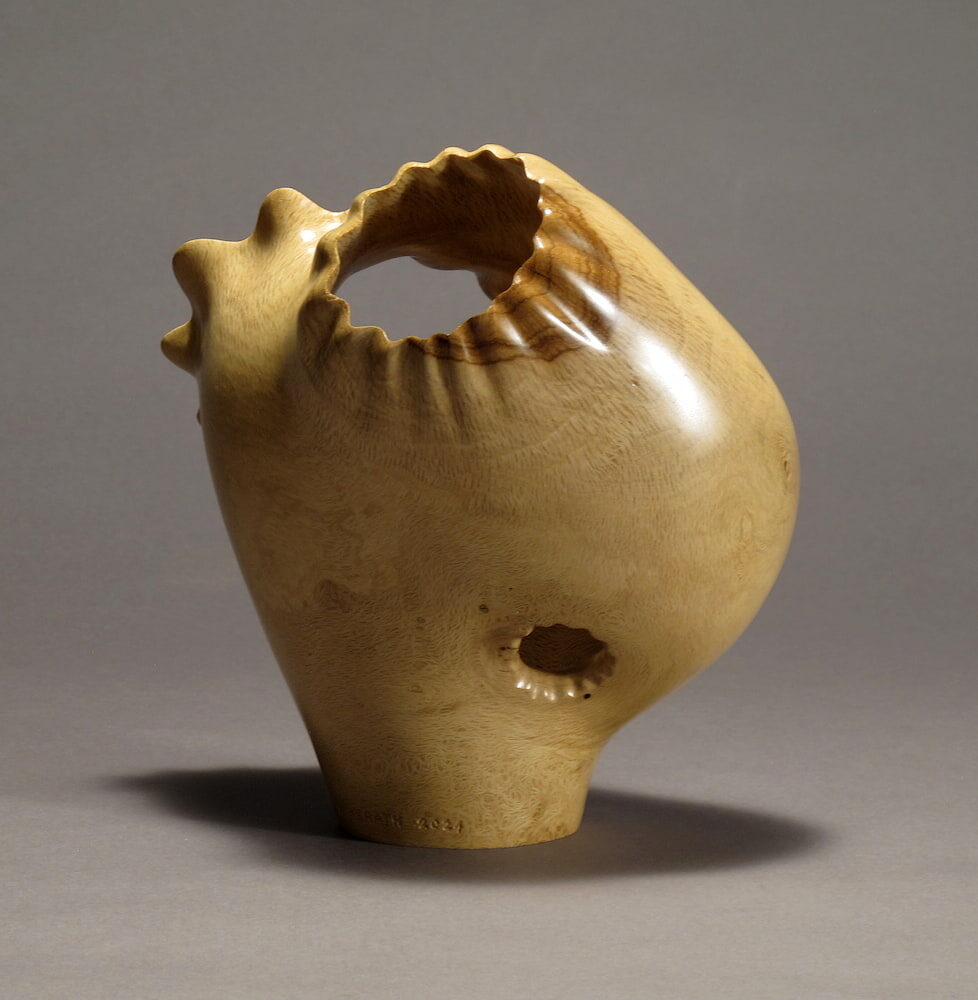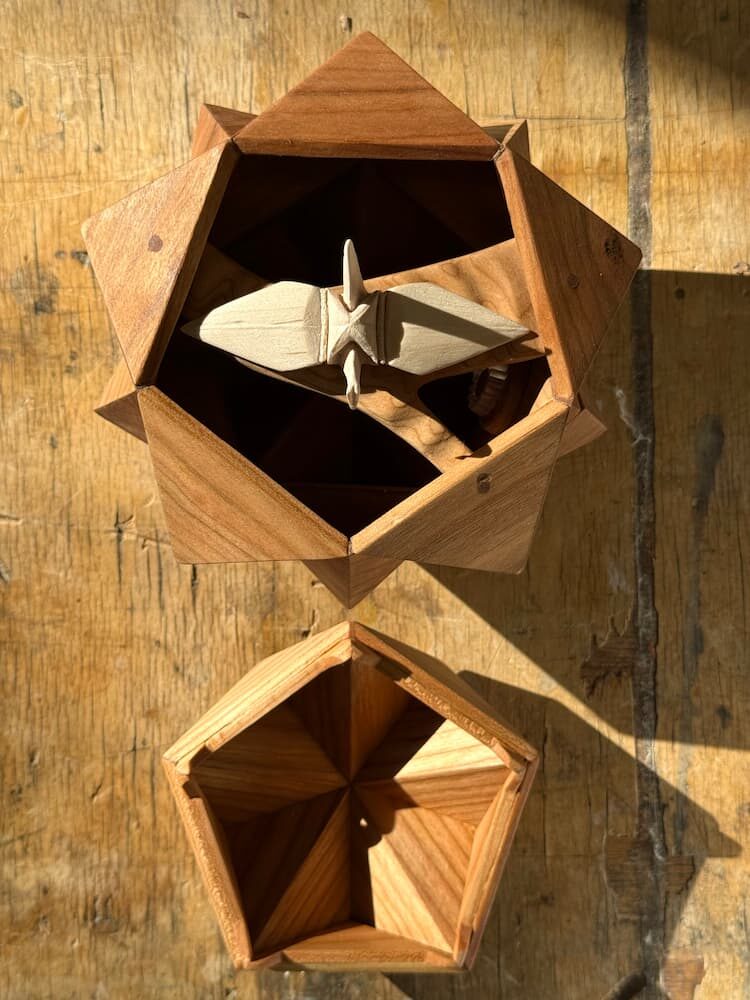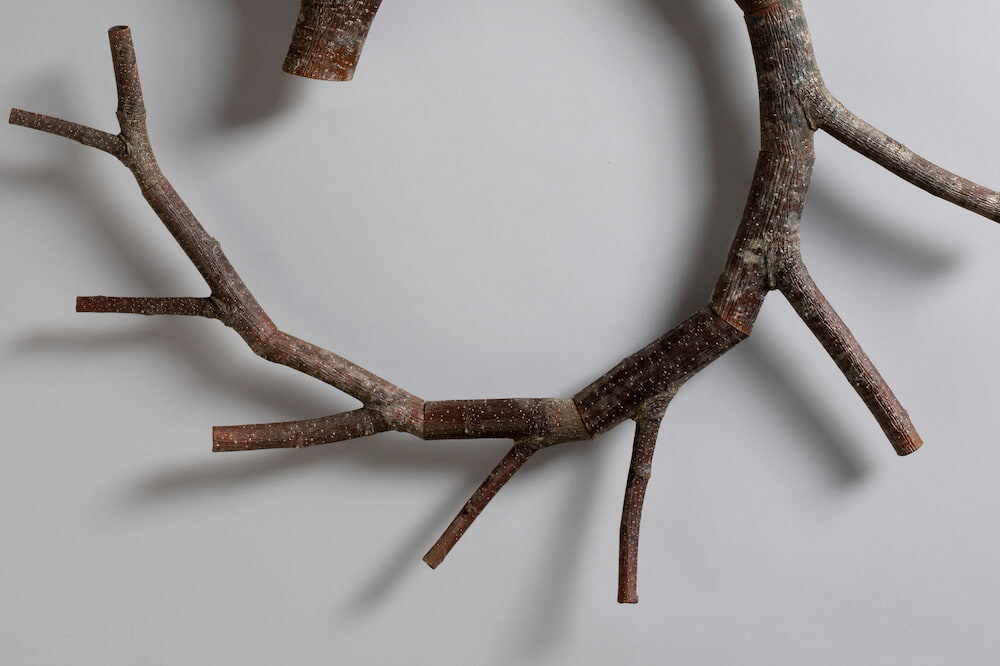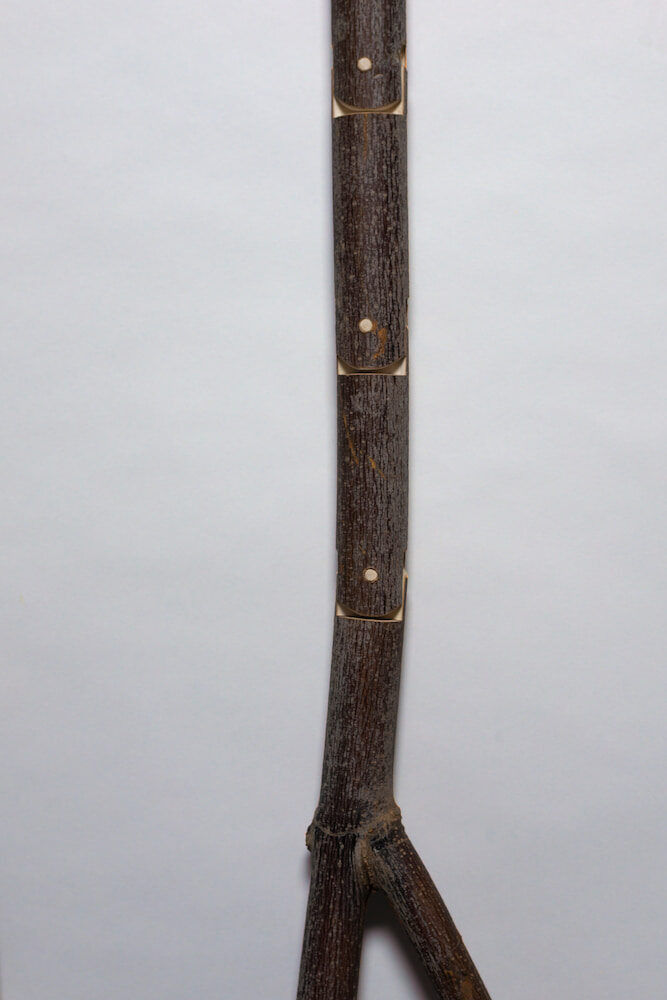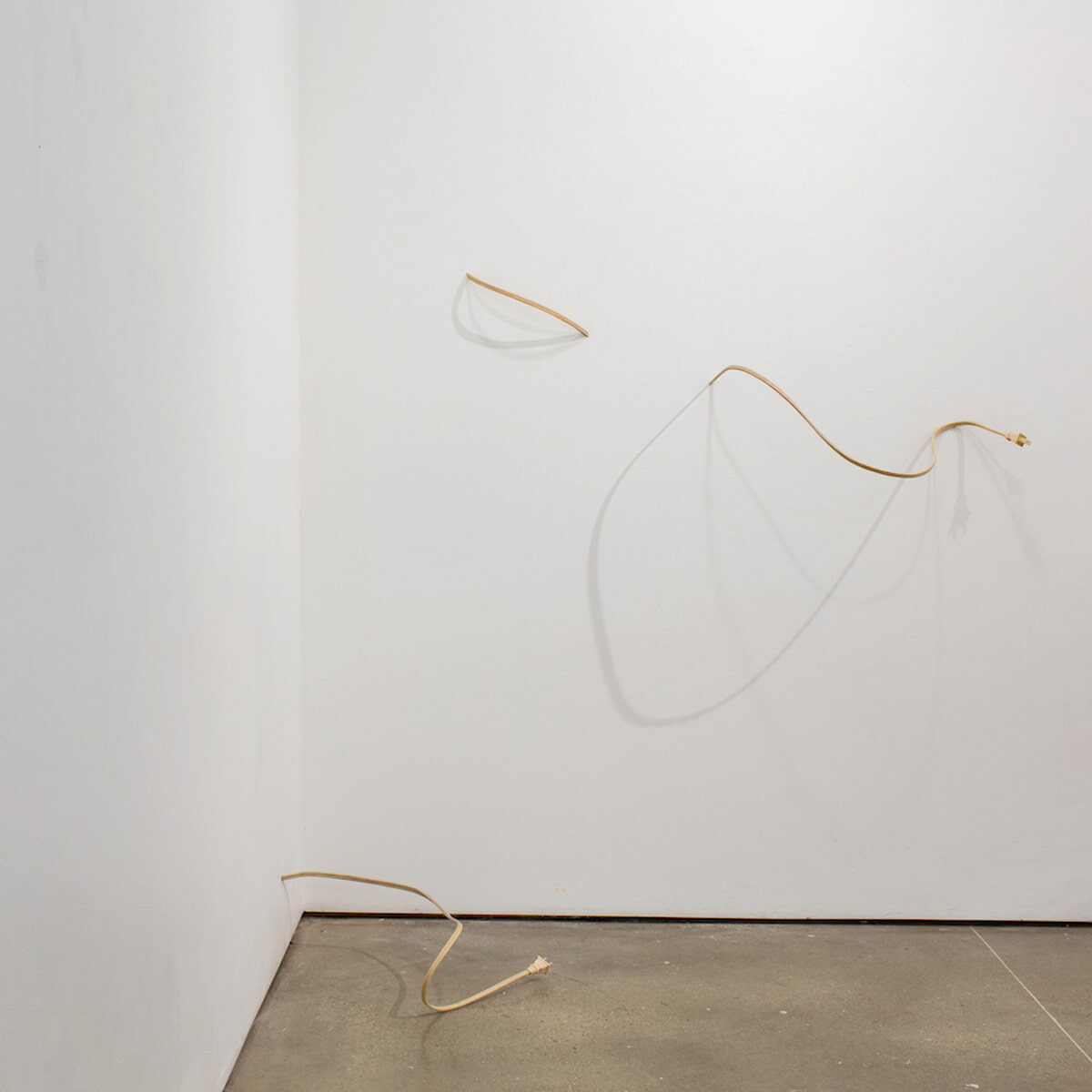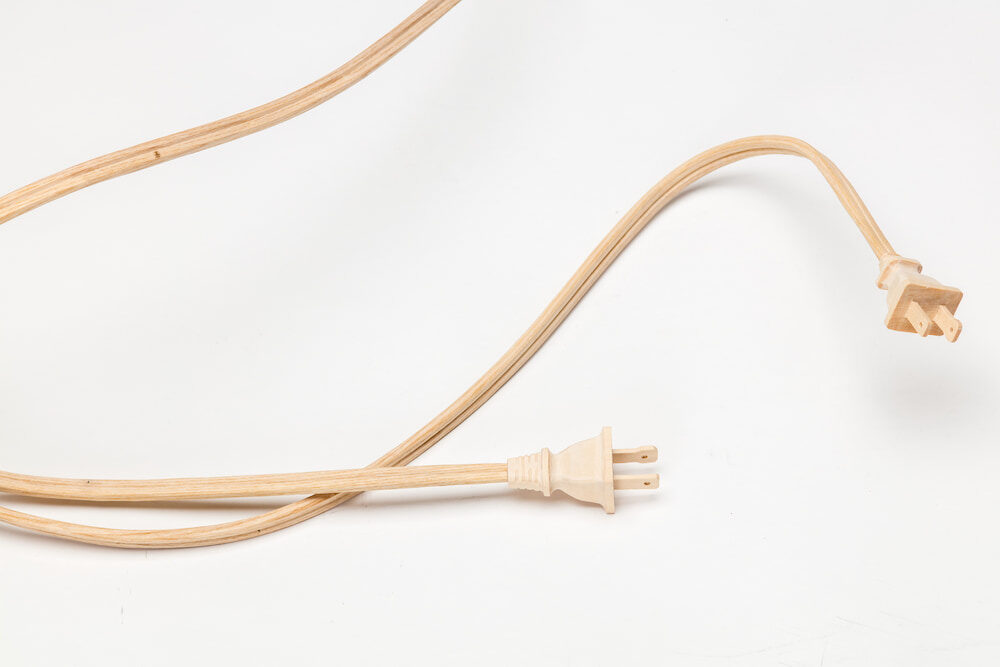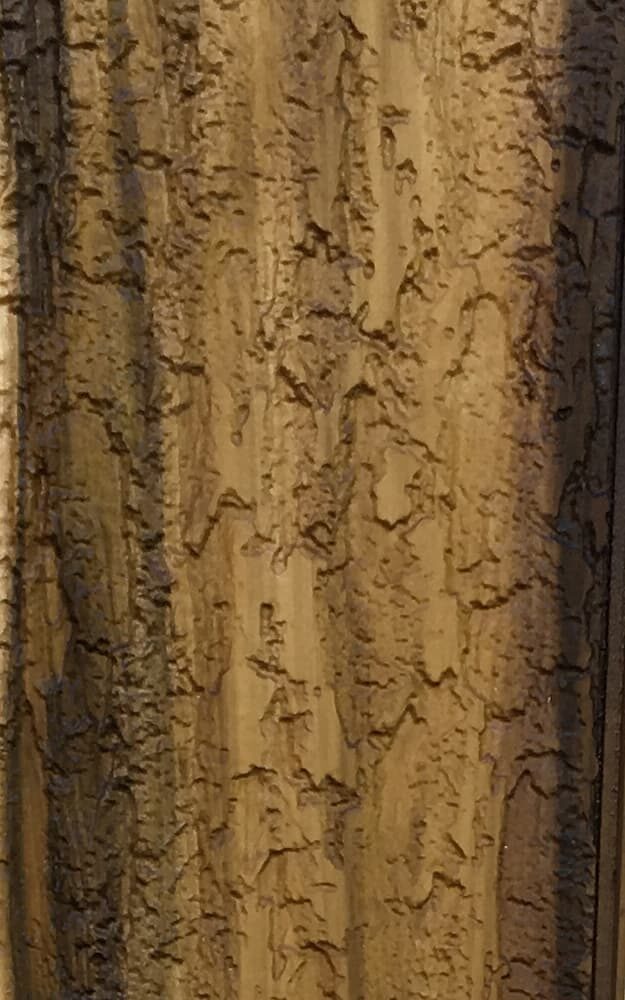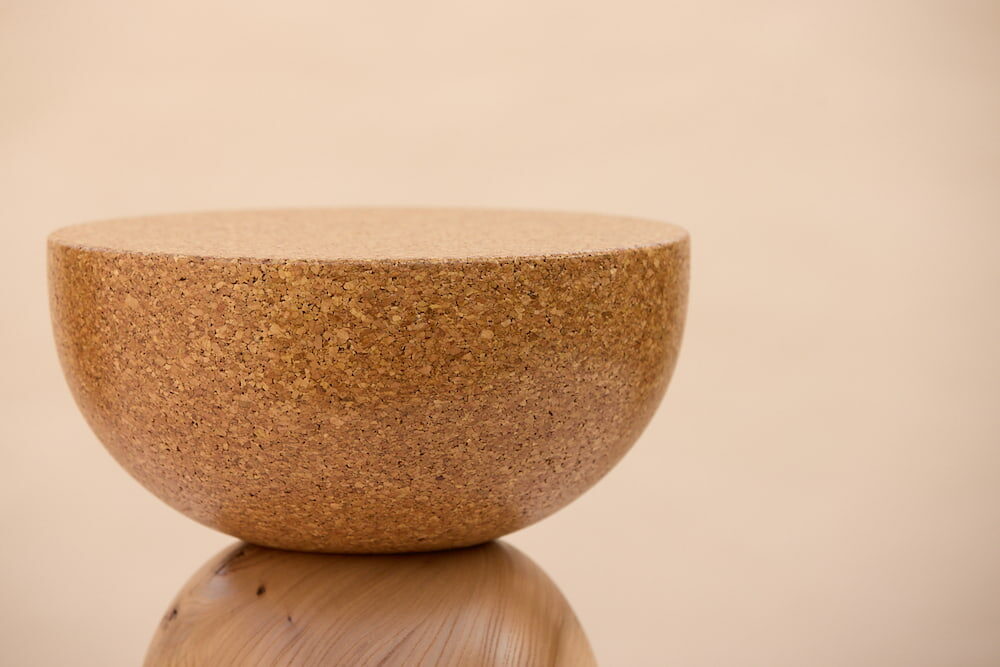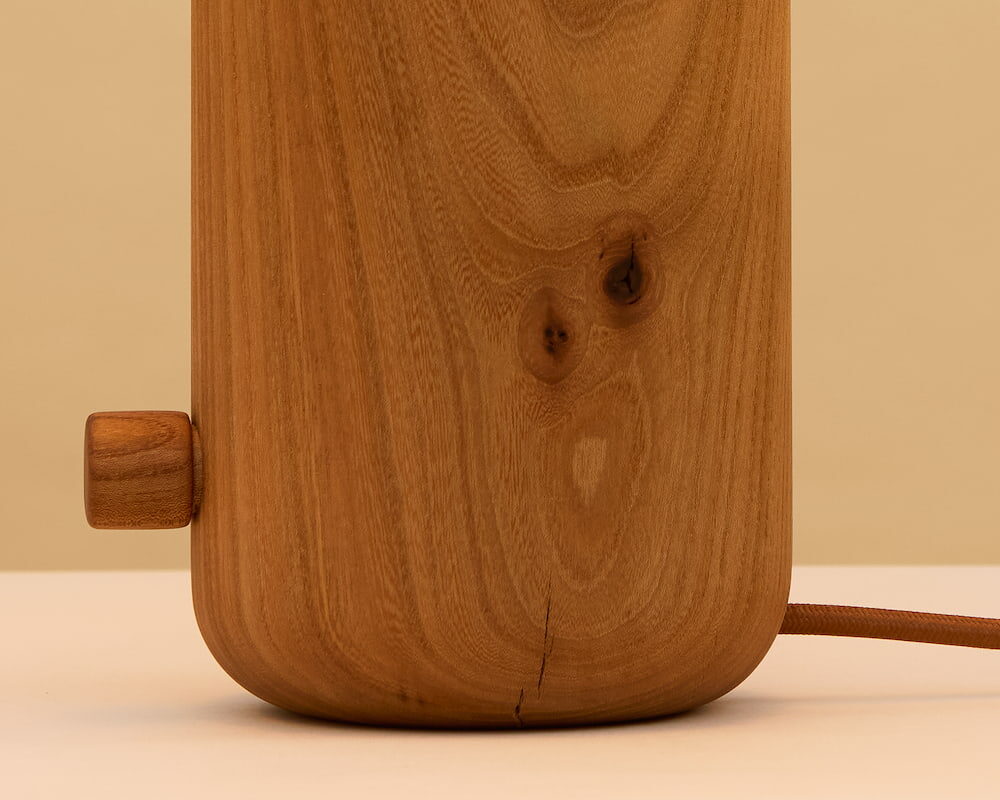Renewal
31st Annual Juried Woodworking Exhibition
June 12, 2025 – September 7, 2025
For many, art serves as a central gateway to renewal. Engaging with art can help us reimagine possibilities, offering glimpses of futures that may seem unattainable in our current reality. Renewal is also at the core of what it means to be an artist. For as long as people have made creative work, they have explored themes of renewal using a range of symbolic and narrative approaches to express core human experiences of growth, transformation, and the potential for reinvention.
Across his career, Wharton Esherick took renewal seriously. After training as a painter he renewed his artistic identity time and again, finding enough inspiration to make everything from illustrated books to stage sets and costumes. He believed in renewed approaches to form, refusing to make furniture that conformed to expectation and instead crafted objects that straddled the line between function and sculpture. He also embraced material renewal, repurposing ready-made wooden objects into new creations like his Hammer Handle Chair and Wagon Wheel Chair.
The enthusiastic response to WEM’s call for entries for its 31st Annual Juried Woodworking Exhibition, themed around renewal, underscores the ongoing relevance of this idea for contemporary makers. The twenty-five artists featured in this exhibition each approach renewal from a unique perspective, yet they share an interest in exploring its many manifestations through wood, whether focusing on its material properties, historical resonance, inherent narratives, or metaphorical potential.
This virtual exhibition features the works of all 25 included artists. These works are also available for viewing in a publication which is available as a digital download or in hard copy. The artworks selected for First, Second, and Third place and Honorable Mention will also be on display in the Visitor Center through September 7th. Our Visitor Center is open during our current tour hours (Wed – Sun 10am – 3pm). Please note, guests wishing to enter the Studio must make advance reservations for a tour.
Many of the works showcased in Renewal are available for purchase and the WEM store also features new jewelry and home-goods made by artists.
2025 Guest Jurors: Rosanne Somerson and Jennifer Scanlan
We were honored and delighted to have Rosanne Somerson and Jennifer Scanlan serve as our guest jurors this year. Somerson is President Emerita and Professor of Furniture Design at the Rhode Island School of Design, and Scanlan is the Executive Director of the James Renwick Alliance for Craft.
First Place: Cameron Lasson
Taxidermy Tree
2023
Birch bark, birch heartwood, birch plywood
18 x 18 x 35 inches
Bow Back Windsor Chair
2024
Oak, rubber cast in oak
18 x 18 x 35 inches
Replica of an 18th Century Folk Chair in Stone
2024
Pine, vinyl stone flooring tiles, nails, stones
15 x 15 x 30 inches
I call this chair a Taxidermy Tree because the natural skin of the tree is reapplied to industrially processed plywood, reanimating the corpse of the tree. It is the same tree in three forms: the first is foraged bark, second is harvested and milled lumber, and third is industrially processed plywood. While the Taxidermy Tree renewed the Birch tree in a new form, it also brought renewal to my art by bringing in the traditional practice of foraging and applying bark to the surfaces of furniture.
Bow Back Windsor Chair renews the tradition of the Windsor chair through the material of urethane rubber. The spindles are carved entirely by hand with a spoke-shave, and the feet are modeled, printed, and cast entirely by machine. The rubber seat and backrest are cast in a hand-carved oak mold, replicating the surface texture of the oak. In this chair, all the components are held together in tension – as all Windsor chairs are – and there is additional tension between the industrial and the traditional.
In Replica of an 18th Century Folk Chair in Stone, my interventions to this 18th century pine folk chair are minimal: just the addition of the stone-graphic vinyl, nails, and stones inside. This gives renewed meaning to the riddle “What weighs more; 100 pounds of feathers or 100 pounds of stone?” This chair is meant to play with our perceptions of the abstract and the concrete. Upon first glance, it is a traditional folk chair, then the faux granite deceives the eye. Finally, as you pick the chair up, it weighs as if it were made of solid stone.
Cameron Lasson is an artist and furniture maker. His work draws from American Folk craft traditions and contemporary industrial vernacular. He studied furniture design at the Rhode Island School of Design, where he graduated in June of 2024. He has exhibited in galleries in Providence, Rhode Island, as well as various furniture fairs, including ICFF in Manhattan (2023, 2024) and Salone del Mobile in Milan (2024). His work was featured in the New York Times, Sight Unseen, E-flux Education, and the For Scale Substack. Additionally, he interned for the artist Lucas Cantù in Mexico City in the summer of 2023. He currently is living and working in Brooklyn, NY.
Second Place: Ellen Sigunik
Bistro Trestle Table, 2024. Ebonized oak, goatskin parchment, aged brass inlay, raw sand-cast brass, 24 5/8 x 24 5/8 x 30 1/4 inches.
My work as an artist is grounded in a deep respect for craftsmanship and the timeless quality of the materials I work with: shagreen, parchment, wood, clay, and bronze. These materials, and the techniques I use to shape them, connect me to some of humanity’s earliest creative expressions. I am inspired by the archaeological essence of my materials and processes, and I see it as a privilege to highlight the histories and stories preserved within their fibers. In a world that moves faster every day, I find meaning in processes that are deliberate, meticulous, and deeply rooted in tradition.
The top of Bistro Trestle Table is the result of a technique I developed to be able repurpose an accumulation of parchment remnants I have saved over my 20-year career working with parchment for clients. The oak frame of the table top was crafted from leftover flooring materials from a house renovation, while the sand-cast brass keys were made using damaged brass fittings I have collected or were gifted to me to use for castings.
All of my current work reflects my commitment to minimizing waste and giving new life to materials that might otherwise be discarded, particularly in luxury design. I crafted a series of these table tops developed for a restaurant, each with its own unique character, along with a 20-foot bar using a similar technique. My goal is to honor every part of the animal skins I work with, and to ensure re-use of all of my material remnants whenever possible.
Ellen Sigunik is the founder and artisan at Sigunik Studio where, over the past 15 years, she has worked with architecture and interior design firms to create heirloom quality pieces of furniture, decorative objects, lighting and interior wall panels for their luxury client base. She works to educate her clients on the unique qualities of parchment and welcomes the opportunity to inspire a closer look at the preserved stories every surface can reveal about its history.
The Ass, 2024. Carved wood, 24 x 6 x 30 inches.
D-g Days, 2023. Carved wood, relief printing on fabric, 24 x 5 x 12 inches.
Photography by Paul Takeuchi
Third Place: Eva Sturm-Gross
The Ass is based on the medieval German palmesels, a wooden statue of Jesus riding a donkey that is part of a Palm Sunday processional. The origin of this tradition is from a text from Zechariah 9:9 which describes the coming Messiah as “humble, riding on a donkey.” My version of the palmesel removes it from the traditional christological context (this is, after all, a text whose meaning was and still is part of the Jewish canon). There is nothing more tied to renewal than the arrival of a messianic world, a time when there is enduring peace. While symbols of Jewish revelation have been appropriated to fuel nationalist violence, it is my hope that I can counter these narratives by portraying them in a new light.
One staple of Talmudic discourse, and the tradition of Jewish exegesis more broadly, is word play. In line with the generations before me, D-g Days is rife with symbolism, some of it a bit tongue-in-cheek and more than a little subversive. “G-d,” which is often spelled with a dash instead of an O, is switched to “D-g.” Coming out of its belly is a scroll with seven circles which parallel the mystical interpretations of the creation narrative. Each one contains symbolism for each day as it is created with specific attention to a gendered duality as understood by the medieval authors of the Zohar. The subversion of this piece is that the days are unspooling from the belly of a dog. Creation not an act of male artistry, but a primal birthing. I am viewing this foundational story in its connection to the natural world and its cycles. And birth is, at its core, an act of renewal.
Eva Sturm-Gross is a Brooklyn based artist and woodworker originally from Vermont. Her prints and sculptures have been exhibited nationally – recently at the Ohio Museum of Craft and the Kent Museum – and she has received work opportunities and fellowships from Haystack Mountain School, Penland School of Craft, and Vermont Studio Center, among others. She thinks of her work as a form of creative exegesis based in the processes of traditional materials. She is interested in theological frameworks and how they can be applied to an immediate reality. Wood carving is the technical foundation of her work; she carves both sculptures and matrices for printmaking.
Honorable Mention: Sara Tabbert
Intersection (pictured top), 2024. Wood veneer, printmaking ink on cradled panel, 12 x 12 inches.
Passing Through (pictured bottom), 2024. Wood veneer, printmaking ink, wood filler on carved cradled panel, 12 x 12 inches.
My work is born of compulsion, curiosity, and my love of process. It is deliberate, rich in texture and often in color, and requires time and attention. Training as a printmaker has taught me a love of careful craft, a desire to create interesting surfaces, and a sculptor’s commitment to materials. I love wood for its dynamic qualities and I am in constant negotiation with its unique challenges.
Both Intersection and Passing Through work towards renewing and refreshing the decorative technique of marquetry. As an artist, I am slowly moving towards woodworking from relief printmaking. Perhaps because of my experience with print work, my instinct with marquetry is to layer, sand, obscure and reveal, incorporate other media, and break some of the “rules” while still holding my cutting and piecing to a high technical standard.
Passing Through is also about the personal renewal brought by exploring a new place and finding great beauty in unexpected places (a chain link fence, electrical insulators, my own wanderings as represented by the moving dots): the challenge, renewal, and productive discomfort of the new.
Sara Tabbert is a printmaker and mixed media artist from Fairbanks, Alaska. With an MFA in printmaking from University of Nebraska-Lincoln, her love of woodblock printing has led to the creation of carved, painted wooden panels. In addition to smaller work, Tabbert’s large-scale public art commissions can be found throughout Alaska. Her work is housed in public collections through the state and far beyond. In early 2020, the Alaska State Museum presented a solo exhibit of her recent work.
Tabbert has been awarded grants from the Rasmuson Foundation and the Alaska State Council on the Arts. In addition to residencies in the US, Canada, Argentina, and Italy, Tabbert has been an artist in residence through the National Park Service in Denali, Zion, Isle Royale, the Chilkoot Trail, and Acadia National Park. In 2024, she was a Windgate fellow in the WARP residency program through the Museum for Art in Wood in Philadelphia.
Sharing art with other people is one of Tabbert’s priorities. She has worked actively as a teaching artist with schools throughout Alaska, and also leads workshops for adults. When not in the studio she enjoys skiing and hiking with her dogs.
saratabbert.com | @saratabbert


Photography by John Carlano/Museum for Art in Wood
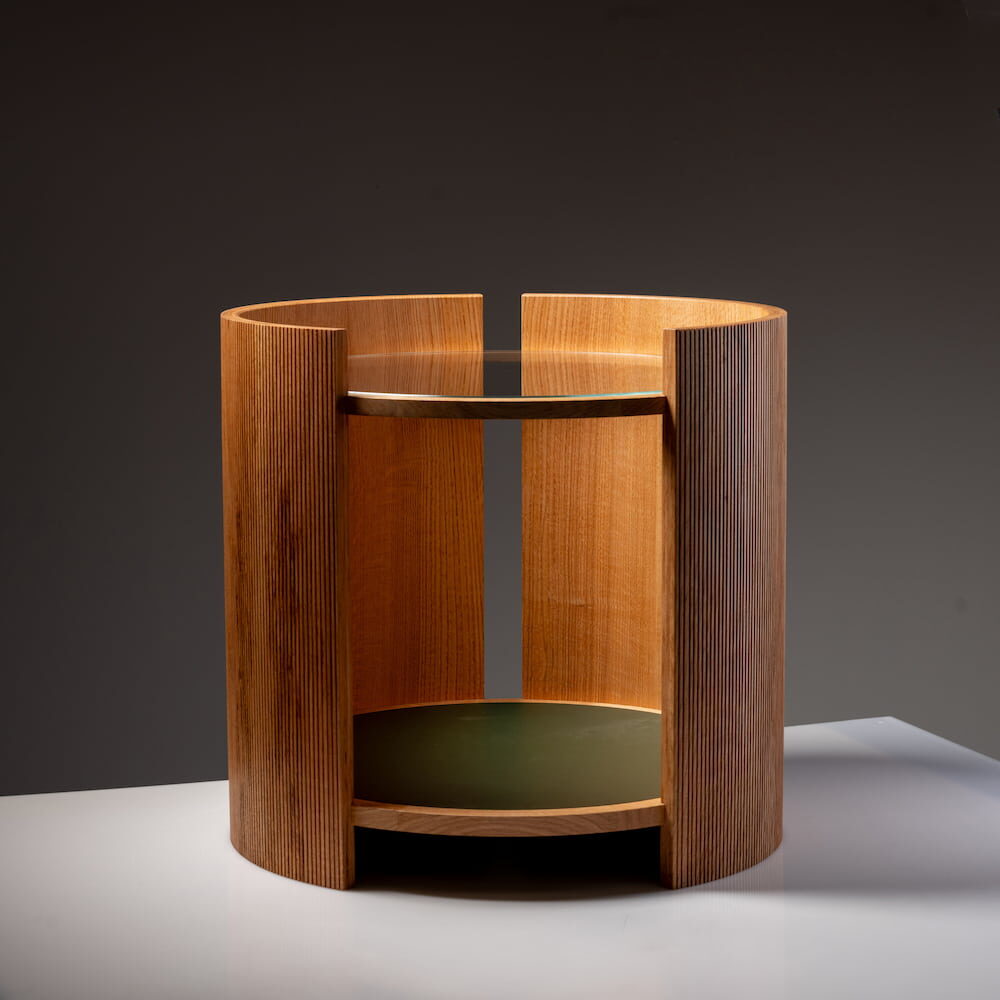
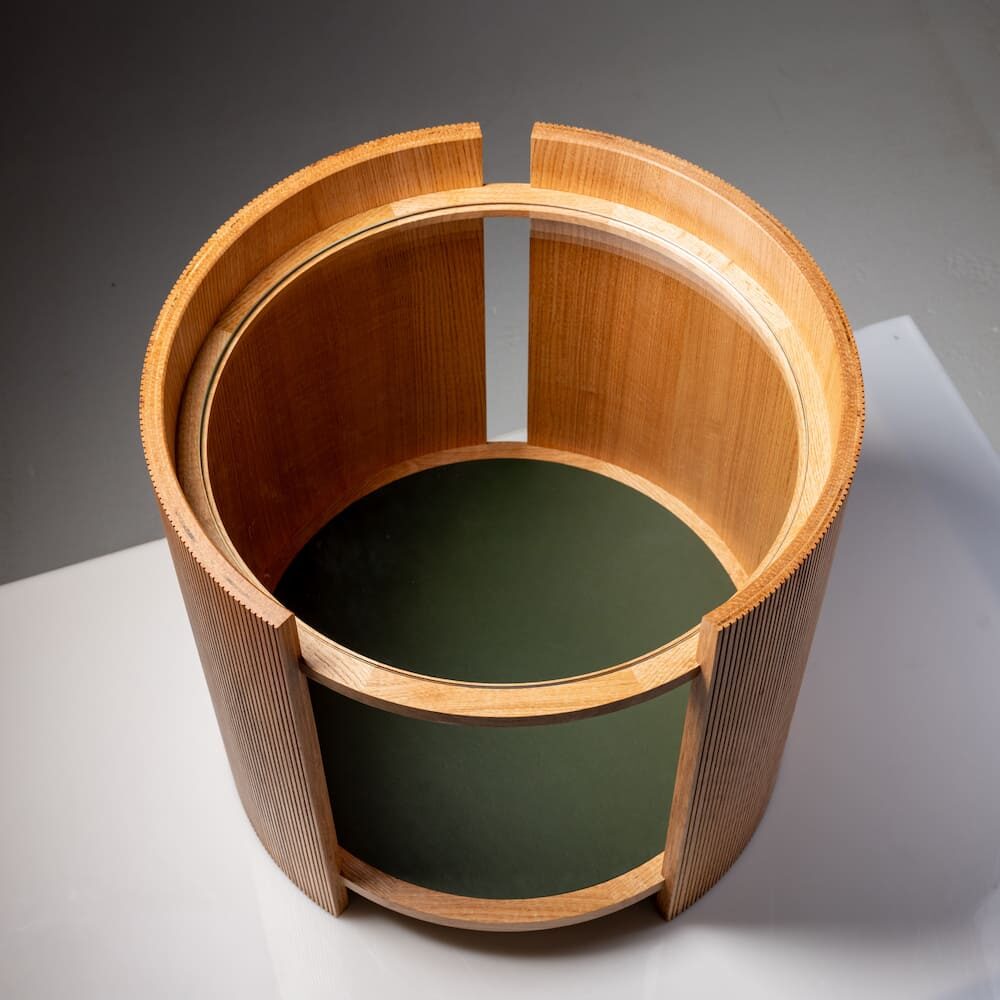
Photography by Daniel Allen Photography
Viewer’s Choice: Keren Oertly
Wrapped Table, 2024. Aotearoa New Zealand red oak, low iron toughened glass, floor linoleum, birch ply, 22 x 22 x 22 inches.
Wrapped Table is a sculptural table that follows a throughline from the tradition of the Stammtisch, or meeting table, which is a regular feature in community settings in eastern Switzerland. A Stammtisch offers a place for people to assemble and discuss politics, philosophy and local matters, often debating and organising around important issues.
Conflating object and ritual, a Stammtisch offers a space and opportunity for the airing of views to build consensus and renew community spirit through shared action. Likewise, this table seeks to offer a welcome space for gathering and connection, around which new traditions might accumulate and develop. Like a small piece of architecture, this work seeks to cross different spatial thresholds, bringing different materials into conversation, and proposing a kind of reorienting object. Sourcing all materials from local suppliers in Whakatū Nelson, Aotearoa New Zealand, the production of the work celebrates community cooperation. The corrugated exterior, achieved through labour intensive hand routing, provides both a texture detail alluding to the process of wrapping, and a meditation on the preservation of the things we value in times of flux and transience.
Keren acknowledges the support provided by Arts Council Nelson, the Centre for Fine Woodworking, David Haig, Lou Fuller, Make Furniture, Kelvin Atkinson, Alison Oertly and Michael Ryan in the production of this work.
Keren Oertly was born in Huiterangi, Switzerland, and grew up between Switzerland and Aotearoa New Zealand. Her love of wood began at an early age when her parents refurbished the Geigenmühle Neerach, a sixteenth century flour mill in north Switzerland, which operated as a living museum and family home in the years that followed. In her object production, Keren seeks to structure her ideas of place, heritage, memory, and identity as a way of negotiating between different senses and experiences of home.
Keren’s training is in the visual arts, where she received a BFA (Hons) from Central St Martins (2011) in London, UK, followed by an MFA in Sculpture from Ilam School of Fine Arts in Ōtautahi Christchurch, Aotearoa New Zealand (2018). Through a social enterprise, Rekindle, which teaches heritage craft practices in community settings, Keren reconnected with wood working. She graduated from the Furniture Makers Programme at the Centre for Fine Woodworking in Whakatū Nelson, Aotearoa New Zealand in 2023. Keren went on to undertake an endowed fellowship at the Center for Furniture Craftsmanship in Rockport, ME in 2024.
Juried Selections
Learn More
Click on the tabs below to learn more about each artist featured in the 31st Annual Juried Woodworking Exhibition.
Upcoming and Related Events
Renewal Catalog
This 80-page, full-color catalog is a comprehensive look at Renewal, the Wharton Esherick Museum’s 31st Annual Juried Woodworking Exhibition. This publication captures the innovative works of art, craft, and design by twenty-five artists whose work explores how renewal exists in their creative lives and practices. Each artwork in this year’s show is represented through imagery alongside artist statements and biographical information. The catalog also includes a welcome from WEM Executive Director Julie Siglin and an introduction from Emily Zilber, WEM Director of Curatorial Affairs and Strategic Partnerships.

